ON OUR WAY TO THE WORLD SYMPOSIUM ON CHORAL MUSIC: CHORAL TRADITIONS IN THE MEDITERRANEAN



Cover:
Mosaica Singers, cond. Nedy Muna (Jordan) at the World Choral EXPO 2022
Gala Concert © Irvinne Redor/ IFCM
DESIGN & CONTENT COPYRIGHT
© International Federation for Choral Music
PRINTED BY PixartPrinting.it, ItalySUBMITTING MATERIAL
When submitting documents to be considered for publication, please provide articles by Email or through http://icb.ifcm.net/en_US/ proposeanarticle/. The following electronic file formats are accepted: Text, RTF or Microsoft Word (version 97 or higher). Images must be in GIF, EPS, TIFF or JPEG format and be at least 300dpi. Articles may be submitted in one or more of these languages: English, French, German, Spanish.
REPRINTS
Articles may be reproduced for non commercial purposes once permission has been granted by the managing editor and the author.
MEMBERSHIP FEES
Membership fees are calculated following the United Nations Human Development Index, and are payable in Euro or Dollars with credit card (VISA, MASTERCARD, AMERICAN EXPRESS, PAYPAL), or bank transfer, to IFCM. For more information, please consult the IFCM membership page at https://www.ifcm.net/
PRINTED COPIES
For Members (with basic membership): US$ 40.00 (36 Euros) per year. Included in other memberships. For Associates and non-Members: US$ 60.00 (53 Euros) per year. For a single copy, contact the office
THE VIEWS EXPRESSED BY THE AUTHORS ARE NOT NECESSARILY THOSE OF IFCM
2nd Quarter 2023 — Volume XLII, Number 2
EDITORIAL
Emily Kuo Vong
FOCUS: ON OUR WAY TO THE WORLD SYMPOSIUM ON CHORAL MUSIC — CHORAL TRADITIONS IN THE MEDITERRANEAN “BETWEEN EAST AND WEST”
CHORAL SYNCRETISM ON THE TWO SIDES OF THE AEGEAN
Antonis Ververis
A BRIEF OVERVIEW OF THE DEVELOPMENT OF CHILDREN'S AND YOUTH CHOIRS IN TÜRKIYE
Dr. Atilla Çağdaş Değer
RHYTHMIC CHORAL MUSIC IN TÜRKIYE, “5, 6, 7, 8: HARMONIZE”
Baş ak Do ğan CHORAL LIFE IN MOROCCO
Samir Bahajin
CHORAL TRADITIONS AND THE CHORAL SCENE IN ISRAEL
Naomi Faran
MULTIPART SINGING IN SARDINIA: CANTO A TENORE
Roberto Milleddu
IFCM NEWS
MESSAGE FROM THE PRESIDENT
Emily Kuo Vong
CHRIS ARTLEY: ON THE ROAD OF LIFE
WINNER OF THE IFCM COMPOSITION COMPETITION 2022
Interview by Irvinne Redor
WSCM 2023 BACKSTAGE
Presentation of the WSCM 2023 local team
THE PEOPLES OF THE AMERICAS SING TOGETHER IN HARMONY AMERICA CANTAT 10
Oscar Escalada
CONDUCTORS WITHOUT BORDERS IN ARGENTINA
Mario Figueroa
CHORAL WORLD NEWS
GAUDETE ET EXSULTATE
INTERNATIONAL CONGRESS OF PUERI CANTORES IN FLORENCE
Matthias Balzer
BOOK REVIEW: JULIET HESS, MUSIC EDUCATION FOR SOCIAL CHANGE–CONSTRUCTING AN ACTIVIST MUSIC EDUCATION (NEW YORK, ROUTLEDGE, 2019)
Reviewed by Martin Berger
CHORAL CALENDAR SPONSORS INDEX

Music, although not a verbal type of cultural practice and expression, helps to build identities, memories, and experiences of region and territory effectively and immediately. As it travels across real and imaginary borders, music encodes the complexity of cultural interaction and provides a space where fruitful studies and practices exist.
The Mediterranean was originally strictly a geographical term, however, as a result of classic work by scholars such as Braudel, Pitt Rivers, and Peristiany, it took on a more complex meaning from a historical to a cultural view, towards the middle of the 20th century. In particular, there is a long musical and choral tradition in the region. Among the peoples of the Mediterranean, music and choral singing facilitate the forging of national and regional loyalties, offer the chance to participate in international exchanges, and raise democratic awareness of cultures and histories.
EDITORIAL BOARD
Roula Abou Baker, Jill Campbell, Ana Patricia Carbajal Córdova, Ulrika
Emanuelsson, Victoria Liedbergius, Lucien
Mendy, Isabelle Métrope, Beatrice Bonfe, Rossana Paliaga, Tomoko Yokoyama
MANAGING EDITOR
Isabelle Métrope: choralmagazine@ifcm.net
EDITOR EMERITA Jutta Tagger
When we mention the choral music from the Mediterranean, we are thinking especially of a long and unique vocal harmony music tradition. Across the Mediterranean, a variety of choral traditions have intertwined over the centuries and continue to carry the traces of their encounters. Even now, there are many talented ensembles that continue to sing in the ancient and fascinating style of the Mediterranean. Their featured performances indicate not just the wide diversity of musical idioms and traditions, but also multiple means of working to enhance different senses of identity and locality.
Both in the past and in the present day, the musicians who migrate within, emigrate from, or immigrate to the Mediterranean are swept up in historical forces that have been part of Mediterranean history for centuries. For example, the stylistic histories of Muslim and Jewish musicians have often followed parallel paths, and unexpected
REGULAR COLLABORATORS
ENGLISH TEAM Mirella Biagi, Laura Massey
FRENCH TEAM Barbara Pissane
GERMAN TEAM Lore Auerbach
SPANISH TEAM Vania Romero
LAYOUT Nadine Robin
MAGAZINE ONLINE EDITION AND TRANSLATIONS
http://icb.ifcm.net
similarities challenge our modern tendency to drive historical wedges between Muslim and Jewish cultures in the Mediterranean. The Mediterranean’s musicians, whether following historical routes of migration across North Africa or charting courses for empire during the Renaissance and Early Modern era, rely on myth to connect the past to the present.
In this issue of our magazine, we can read many excellent articles about the choral traditions in the Mediterranean by authors who cherish practice experiences in this special and beautiful region. I believe their articles will help to open the door to the choral world in the Mediterranean.
Edited by Laura Massey, UKPUBLISHER
International Federation for Choral Music
MEMBERSHIP AND SPONSORING

IFCM International Choral Magazine PO Box 42318, Austin TX 78704, USA
Fax: +1-512-551 0105
Email: office@ifcm.net
Website: http://icb.ifcm.net
“BETWEEN EAST AND WEST” CHORAL SYNCRETISM ON THE TWO SIDES OF THE AEGEAN
Antonis Ververis
A BRIEF OVERVIEW OF THE DEVELOPMENT OF CHILDREN'S AND YOUTH CHOIRS IN TÜRKIYE
Dr. Atilla Çağdaş Değer
RHYTHMIC CHORAL MUSIC IN TÜRKIYE
“5, 6, 7, 8: HARMONIZE”
Başak Doğan
CHORAL LIFE IN MOROCCO

Samir Bahajin
CHORAL TRADITIONS AND THE CHORAL SCENE IN ISRAEL
Naomi Faran
MULTIPART SINGING IN SARDINIA:
CANTO A TENORE
Roberto Milleddu
ANTONIS VERVERIS
Musicologist, teacher and choral conductor, Ioannina, Greece
THIS ARTICLE EXPLORES THE PARALLEL PATHS OF TWO HISTORICALLY SIGNIFICANT VOCAL TRADITIONS WHICH DEVELOPED IN ISTANBUL: GREEK ORTHODOX CHANT AND OTTOMAN COURT MUSIC. AS WE WILL SEE, THESE TWO ART MUSIC GENRES, APART FROM BEING DEVELOPED IN THE SAME PLACE, SHARE A “SIMILAR FATE” LARGELY INFLUENCED BY PREVAILING POLITICAL TRENDS OF THE 19TH AND 20TH CENTURIES. MOREOVER, BOTH GENRES HAVE BEEN A SOURCE OF INSPIRATION FOR CONTEMPORARY COMPOSERS OF CHORAL MUSIC, BOTH IN TÜRKIYE AND GREECE. THESE COMPOSERS HAVE CONTRIBUTED TO THE ESTABLISHMENT OF A “SYNCRETIC” CHORAL GENRE WHICH BLENDS FEATURES OF LOCAL MUSIC TRADITIONS AND WESTERN ART MUSIC.
GREEK ORTHODOX CHANT
The term “Byzantine music” refers to the ecclesiastical music of the Greek Orthodox Church. It should be noted that this term is problematic as it implies that the genre developed exclusively during the Byzantine period without evolving in the centuries that followed. Moreover, the term “Byzantine” itself is a neologism, which was coined by the German historian and humanist Hieronymus Wolf who lived in the 16th century, after the fall of Byzantium in 1453. For this reason, in academic contexts, other terms have been proposed such as “Greek Orthodox Chant”. In his Grove article, Kenneth Levy mentioned 12,000 to 15,000 surviving manuscripts dating from before 1453, the earliest ones of which—written in ekphonetic notation—date from the 9th century. He also emphasized that this genre continued to develop after the fall of the empire, flourishing mainly in monasteries and at the patriarchal see of Constantinople (Istanbul). Basically monophonic, Greek Orthodox chant is performed a capella, accompanied by a vocal drone called isokratima. It follows a theoretical system consisting of eight modes that include intervals
smaller and larger than the semitone, and which should not be confused with the modes found in Western church music during the Renaissance. The notation system used today is the result of a reform carried out at the beginning of the 19th century by the so-called “three teachers” Chrysanthos, Chourmouzios the archivist and Gregorios the Protopsaltes. Nevertheless, as the musicologist Nikos Andrikos points out, despite its “scholarly” character, Greek Orthodox chant shares both literal and oral elements. This means it cannot be transcribed into a music score with absolute accuracy, since there are specific features which are passed down orally from the older to the younger cantors.
Regarding the cantors who chanted in the Greek Orthodox churches of Istanbul, these seemed to be connoisseurs of court music as well. This becomes apparent by the large number of cantors who worked also as court musicians, some of which published editions of Ottoman music or even wrote theoretical treatises on this genre. It should be mentioned that the Greek Orthodox community was not the only non-Muslim religious community which contributed to the musical life of Istanbul. Equally important was the contribution of Jewish and Armenian musicians such as
the composer Hampartsoum Limondjian (1768-1839), known in the imperial court as ‘Baba Hamparsum’ (Father Hampartsoum). Limondjian devised a notation system, called hamparsum notation, with which he transcribed hundreds of compositions of Ottoman court music as well as sacred and secular Armenian songs.

Ottoman court music was essentially monophonic, performed traditionally in a heterophonic manner. It was organized by a system of modes and rhythms, known as makams and usuls respectively. In the Ottoman court, vocal music seems to have played an important role as indicated by a significant number of genres such as kâr, beste, agir semai, yuruk semai, which were part of the longer fasil form, in addition to the şarkı, the improvisatory form gazel, etc. Nevertheless, it should be made clear that these vocal genres were performed mainly by solo singers and not choral ensembles.
Until the early 20th century, when the use of Western notation was generalized, Ottoman art music was learned through a system of oral transmission called meşk. In the context of Ottoman visual arts, such as calligraphy, the term meşk referred to the copying
exercises that teachers assigned to their apprentices. In music, the term meşk referred to the teaching process in which the student memorized orally the taught repertoire, by repeating its basic components, such as the poetic text, the rhythmic cycle (usul) and the melodic structures based on in the modal system of makams.
The “East–West” dichotomy can be traced back to Ottoman society as early as 19th century. Regarding music, this dichotomy was expressed by two opposing concept styles: the alla turca and the alla franga style, of which the first was identified with modernity and innovation, while the latter with the conservative commitment to tradition. With reference to this era, indicative is Sultan Mahmud II’s (reigned 1808–1839) decision to invite European teachers to Istanbul in order to train the musicians who played in the Ottoman Army and replaced the Janissary Corps, which had already been abolished in 1826. In addition, in 1828, Western notation was adopted as the “official system” of the Ottoman Empire. Similar was the fate of Ottoman court music during the years of the Turkish Republic, mainly due to the multicultural character of Ottoman arts in general, an element that could not contribute to the development of a Turkish national identity. Moreover, basically monophonic, Ottoman court music could not constitute the music of a nation claiming its place among the “developed” nations of the world. For these reasons, interest in this music was initially limited, while from the 1970s, the strong influence of State Radio and Television standardized a new performance practice of this music which was now performed by large instrumental and vocal ensembles. Due to their size, and despite their monophonic character, these ensembles were reminiscent of Western-style orchestras and choirs. However, despite the relatively limited interest in it, Ottoman court music—as well as folk music from rural areas of Türkiye—has been a source of inspiration for modern Turkish composers. In his article “Singing with Style: The Turkish Choral Landscape” [ICB 2021-4], conductor Burak Onur Erdem identified two key features in Turkish composers’ choral music that indicate the influence of these genres: their irregular rhythmical structure and the modal development of melody and harmony under the influence of makams.
Interestingly, Greek Orthodox chant on the “opposite side of the Aegean” underwent a similar development during the decades that followed the establishment of the Greek State in 1830. Indicative was the case of the Metropolitan Cathedral of Athens, in whose Easter service in 1869 the choir performed some polyphonically harmonized hymns. This practice,
despite the controversy it caused among ecclesiastical circles, was further developed during the reign (1867-1913) of Queen Olga, who was of Russian origin. Here too, vocal music was seen as a means of achieving an important goal: the development of a new national identity, of a nation placed among the other “developed” nations of the West. Therefore, early 20th century composers combined features of European art music with elements from Greek Orthodox chant and folk music in their choral works. In 1908, influential composer Manolis Kalomiris (1883-1962), presented his manifesto for the so-called “Greek National School”, the purpose of which should be “the building of a palace in which to enthrone the national soul” by combining folksong and folk rhythms with techniques invented by “musically advanced peoples”.
Edited by Laura Massey, UKANTONIS VERVERIS was born in Athens in 1982, and brought up on the island of Lesvos, Greece. He studied Musicology and Music Education at the Aristotle University of Thessaloniki, and Sociology at the University of the Aegean. In addition, he received graduate degrees from Roehampton University, UK, and Lynchburg College, USA, in Choral Education and Choral Conducting, respectively. He holds a PhD from Aristotle University where he carried out research on gender stereotypes in music education. His research interests also include children’s vocal development and teaching methods of traditional Greek music. Since 2018, he has been teaching courses on Music Education, Choral Conducting and Santouri (a Greek folk instrument) in the Department of Music Studies at the University of Ioannina, Greece. Email: ververis@uoi.gr
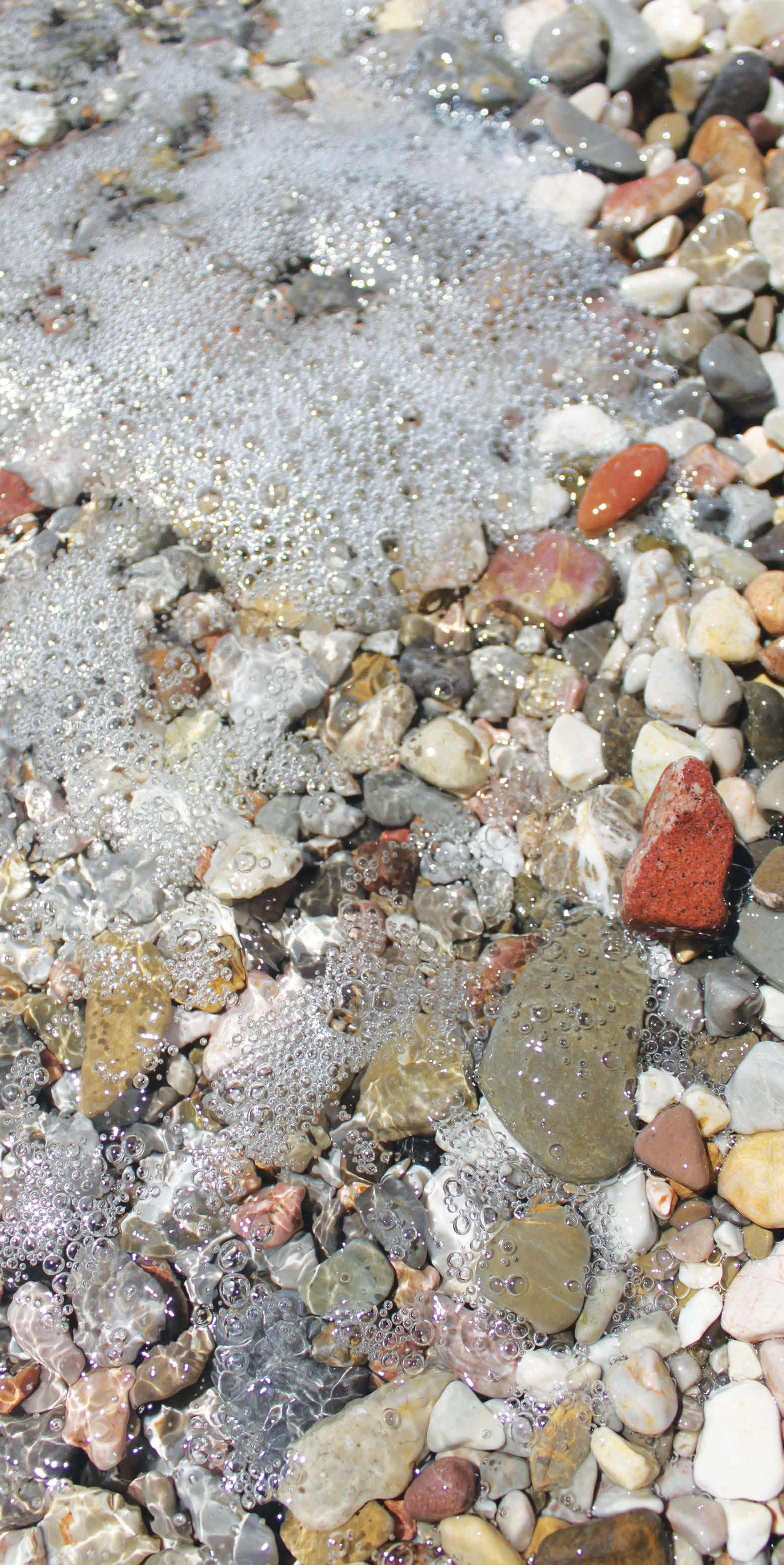
 DR. ATILLA ÇA Ğ DA Ş DE Ğ ER Pedagogue and conductor, Türkiye
DR. ATILLA ÇA Ğ DA Ş DE Ğ ER Pedagogue and conductor, Türkiye
THE “WESTERNIZATION” MOVEMENTS OF THE OTTOMAN EMPIRE, WHICH BEGAN IN 1826, LAID SOME FOUNDATIONS FOR CHORAL MUSIC BEFORE THE REPUBLIC, BUT THESE DEVELOPMENTS WERE LIMITED TO THE PALACE AND ITS SURROUNDINGS. REAL PROGRESS WAS MADE WITH THE FOUNDATION OF THE REPUBLIC OF TÜRKIYE AND ITS POLICIES THAT ADOPT “MODERNIZATION”.
Faik Canselen, Erdoğan Okyay, Saip Egüz, Ziya Aydıntan, and pioneering educator-composers such as Hikmet Şimşek, Muzaffer Arkan, Muammer Sun, Hikmet Şimşek, Muzaffer Arkan, Muammer Sun, and Cenan Akın laid the foundations of children’s and youth choirs in Türkiye.
The first theoretician of Turkish choral music is the composer, educator and musicologist Ahmed Adnan Saygun. He stated that choral work is the cheapest and fastest way of education in the musical life of the people, and that everyone can sing and that this ability can be developed through education (Adnan: 1940:13-19).
The first youth and children’s choir movement funded by the state in Türkiye was started on June 19, 1968 with the “Children’s and Youth Choirs Instruction” prepared under the leadership of Muammer Sun, who was a consultant to the Ministry of National Education (Sun, 1969: 227).
This document, revolutionary both in terms of its historical value and its content, consists of seven chapters regulating the establishment of children’s and youth choirs. According to Sun (1969:220), Provincial Directorates of National Education, on behalf of the Ministry of National Education, were
in charge of the establishment of choirs, and of operations, concerts, development and meeting the needs of the choirs. It was planned that 80 Children’s Choirs and 80 Youth Choirs would be established throughout the country, that each choir would prepare at least two concert programs per year, and that at least 320 concert programs would be presented as a series of at least 10 concerts in schools, in halls and outdoors, to students and the public. In the 1968-1969 academic year, 166 children’s and youth choirs were established in many provinces and districts, and these choirs worked and gave concerts with the set goals. Two in-service training sessions were organized for the directors of the choirs, the first in Ankara (1968) and the second in Sinop (1969). The first national choir movement of our country, which was realized with planned, diligent and devoted efforts and which raised great hopes for the future, was stopped after two years. (Değer, 2012:27)
Composer and educator Cenan
Akın founded the Akbank Children’s Choir in 1975, the first children’s choir in the private sector in Türkiye. Through this choir, composers were commissioned to write children’s songs for the first time, a competition was opened for this
purpose, and the songs that were published in a book were distributed to schools free of charge by Akbank upon the recommendation of the Ministry of National Education (İlyasoğlu, 2007: 130, Akbank, 1979: 3).
Until the late 1970s, it can be said that an educational and social foundation was laid and the groundwork was prepared for the establishment of TRT Children’s Choirs, which has the most firmly established and permanent place among children’s choirs in our country. The establishment of TRT Children’s Choirs started in 1977 and then other children’s choirs were established around Türkiye.
Until the 1980s, there were very few “youth choirs” established through choral lessons in music education institutions and/or the initiatives of idealistic choir conductors. However, the first attempt to establish youth choirs with a nationwide impact was the TRT Ankara Radio Youth Choir under the direction of choirmaster Mustafa Apaydın and the TRT Istanbul Radio Youth Choir under the direction of choirmaster Gökçen Koray in 1983. TRT Izmir Radio Youth Choir was established in 1985.

Because of the state monopoly of radio-television broadcasting, especially until the early 1990s, not only children, but almost all Turkish people listened to children’s songs, folk songs, marches and different choral
works through children’s and youth choirs. One of the most important contributions of TRT Children’s and Youth Choirs to music education is that it encouraged aspiring music educators to establish children’s and youth choirs. Some of the members of these choirs have also formed the source of youth choirs within non-governmental organizations.

In 1983, the Ankara State Opera and Ballet Children’s Choir was founded under the direction of Sevim Ünal and Saadettin Ünal. The same choir was renamed the State Polyphonic Children’s Choir within the Ankara State Polyphonic Choir with a protocol signed by the Ministry of Culture on November 15, 1990 (Yüksel, 1996: 40). Founded in 1989 under the leadership of TRT Ankara Youth Choir conductor Mustafa Apaydın, the Turkish Polyphonic Choirs Association (TPKD) organizes the Türkiye Choirs Festival, the longestrunning national choral event in Türkiye.
In 1994, the “Akyurt Children’s Choir” was established as part of the Sevda-Cenap And Music Foundation’s project to “initiate and popularize music education at a young age”.
Founded in 1999, the Association of Music Educators (MÜZED) is the most widespread and the only professional organization that gives special recognition of the importance of the choir in music education, and works with its members to develop and spread choral education.
The second national choir organization in Türkiye was carried out in 2001 by the Ministry of Culture under the leadership of educator and composer Salih Aydoğan. Within the scope of the project called “A Choir for Every Province, A Song for Every
Child”, children’s and youth choirs were established in 29 provinces between 2001 and 2003. The Ministry of Culture organized choral training and management seminars for the directors of these choirs in Ankara (2001) and Antalya (2002).

In 1968, the Ministry of National Education and in 2001, the Ministry of Culture halted the work that had begun under the auspices of the Ministry of National Education and Culture, respectively.

Choral music, especially children’s and youth choirs, became widespread in the 2000s, mostly through individual efforts and the intensive work of universities and non-governmental organizations.
It can be said that the choral tradition has spread from big cities such as Ankara, Istanbul and Izmir in Türkiye. Although there are Fine Arts High Schools in almost all the cities in the country and universitylevel music schools in the majority of them, it is a fact that the number of choirs is altogether insufficient compared to the population. One of the most important reasons for this is the lack of education programs in music schools to train qualified choir conductors. Other problems are the lack of support for those choirs that continue their work, such as working space, concert opportunities, etc., and the fact that choir conducting is not accepted as a profession. Despite all these negative aspects, it is a fact that in the 2000s, when communication opportunities such as the internet, social media, etc. developed and became widespread, the number of children’s and youth choirs in Türkiye increased, more children and young people showed interest in choirs, many people studying music were interested in choral conducting and this interest is increasing day by day.
Edited by Gillian Forlivesi Heywood, Italy/UKDr. ATILLA ÇAĞDAŞ DEĞER started his music education by singing in amateur youth choirs. He completed his Bachelor’s degree at Bilkent University, Faculty of Music and Performing Arts, Department of Choral Arts, and his Master’s degree and Phd at Gazi University, Institute of Educational Sciences, Department of Fine Arts Education, Music Teaching. He worked as a part-time lecturer in the same institutions. Since 1998, he has worked as a volunteer music educator in many projects, founded many choirs of different types and supported the training of young choir conductors. Since 2006, he has been teaching SolfegeDictation-Theory and Choir at Hacettepe University Ankara State Conservatory. With an understanding that can be summarized as “music education for everyone”, Değer carries out studies for children, young people, adults and the educators who will raise them. For more information: muammersunkorosu.com — Email: atillacagdas@yahoo.de
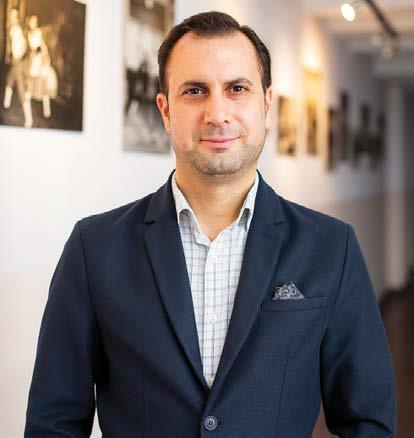
IN THIS ARTICLE I WILL ADVOCATE FOR AND EXPLORE THE NEED FOR RHYTHMIC, OR JAZZ/POP, CHORAL MUSIC AND THE URGE TO CREATE AND SING FREELY AS A GROUP. WITH ITS UNIQUE LOCATION BRIDGING EAST AND WEST, TÜRKIYE HAS A GREAT MUSICAL HERITAGE FROM A WIDELY DIVERSE CULTURAL BACKGROUND; A THOUSAND LAYERED UNIQUE FLOWER, WITH EACH LAYER NOURISHING THE OTHER. HOWEVER, DESPITE THIS ENORMOUS CULTURAL GIFT, COLLECTIVE SINGING IS LITTLE PRACTICED.
Polyphonic choral singing has been emerging since the Republic was formed (this year marks its hundredth year) and with the remarkable and substantial efforts of musicians and academics it has come a long way, especially in the last 20 years. Having said that, the vast majority of choirs have classical and folk choral music in their repertoire, and
while some of those include jazz/ pop choral pieces from time to time, there are only a very few jazz/ pop choirs that specifically create their selection of repertoire with rhythmic music. When one thinks of choirs here in Türkiye what first comes to mind would be a classical Turkish music choir, where all the singers sing one melodic line together with accompanying traditional instruments.
Classical Turkish music is linear, homophonic, microtonal and has an original tonality system called makam. The newer, thriving choral music of the last hundred years is polyphonic and is focused mostly on Western classical and folk music. Since polyphonic choral singing is fairly new to people in Türkiye, especially to non-musical ears, it is really exciting that the
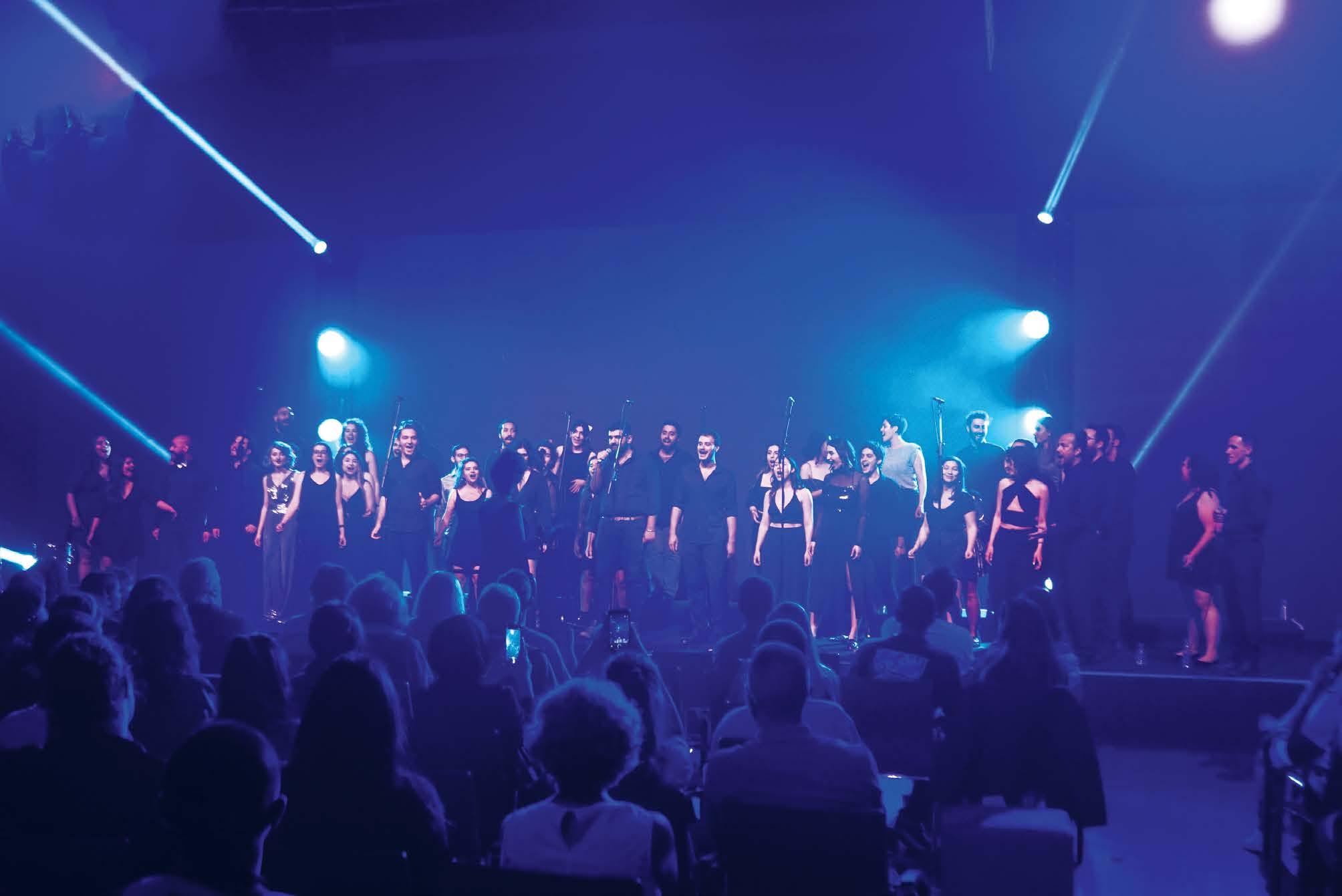
upcoming generation of choirs is changing this perception for good.
My own approach to choral singing and my musical universe and understanding completely changed forever after completing my master’s degree in Rhythmic Choir Conducting at the Royal Academy of Music, Denmark, at the one and only RAMA Vocal Center. Through experiencing and being taught rhythm and harmony in a new way using the great improvisational method Vocal Painting (an extensive collection of interactive hand signals, developed by Jim Daus Hjernøe), another level of musical reality opened up for me. Freedom of creativity can go hand in hand with musical precision in a choir, even in an amateur choir, and the results are always amazing –we definitely need more of that here on the Turkish choral scene and, in fact, throughout the world.
The playful nature of jazz/pop and its roots in improvisational creativity mean that it is always a fast and easy way to unlock the potential of choir singers while highlighting the diversity of each individual’s contribution. While singing syncopated and harmonically challenging melodic lines together as a group, singers will develop a more profound understanding of time and tonality in music. The importance of being exactly together in rhythm, having the same tone color in order to maintain a balanced blend and good intonation, and starting and ending every note together are the core components of making brilliant and groovy music in a jazz/pop choir. The practice of these main features of rhythmic music is certainly very beneficial for any type of musical genre. For instance, when I work with my choir Chromas on different tone colors in a pop piece like You’re All I Need To Get By (The Swingles), the tonal quality of a completely different
genre piece like Cloudburst by Whitacre also improves. In my opinion, what makes the rhythmic choral repertoire better also directly makes collective singing better as a whole – whether it is contemporary, classical or folk.
Furthermore, with the help of Vocal Painting in a choral setting you can always push the boundaries of singing and self-expression, which always leads to musical excellence. I strongly believe that building an inviting open space for every individual to express their authentic truth is fundamental to making good music. With the pedagogical approach of Vocal Painting, time flies by while singing improvisational compositions of the moment and both the individual singers and the choir further their musicianship. It is easier to work on a musical piece when there is flow, when one is in the moment and is mindful to one’s musical perception. By creating an open and playful environment every singer experiences the process of making music in as true and real a way as possible.
As much as I am genuinely glad that there is an ever-increasing number of jazz choirs and vocal ensembles in Türkiye, the urge and great need to have more choirs within these new genres is quite apparent. In Türkiye, vocal pop music has been prominent for decades and there are key figures that sing in harmony and in groove, so why not incorporate this music into choirs and make it challenging and innovative for young singers?
I imagine more and more choirs founded every day, in every city; more people singing jazz/pop a capella and creating freely as a singing community. Young people’s musical interest is largely r&b, soul, rock and pop vocal music – having a choir that focuses on that music would attract them and give them a choral space where they feel they belong. Starting jazz/pop choirs especially for young people would have an amazing impact on the future growth of the choral scene.
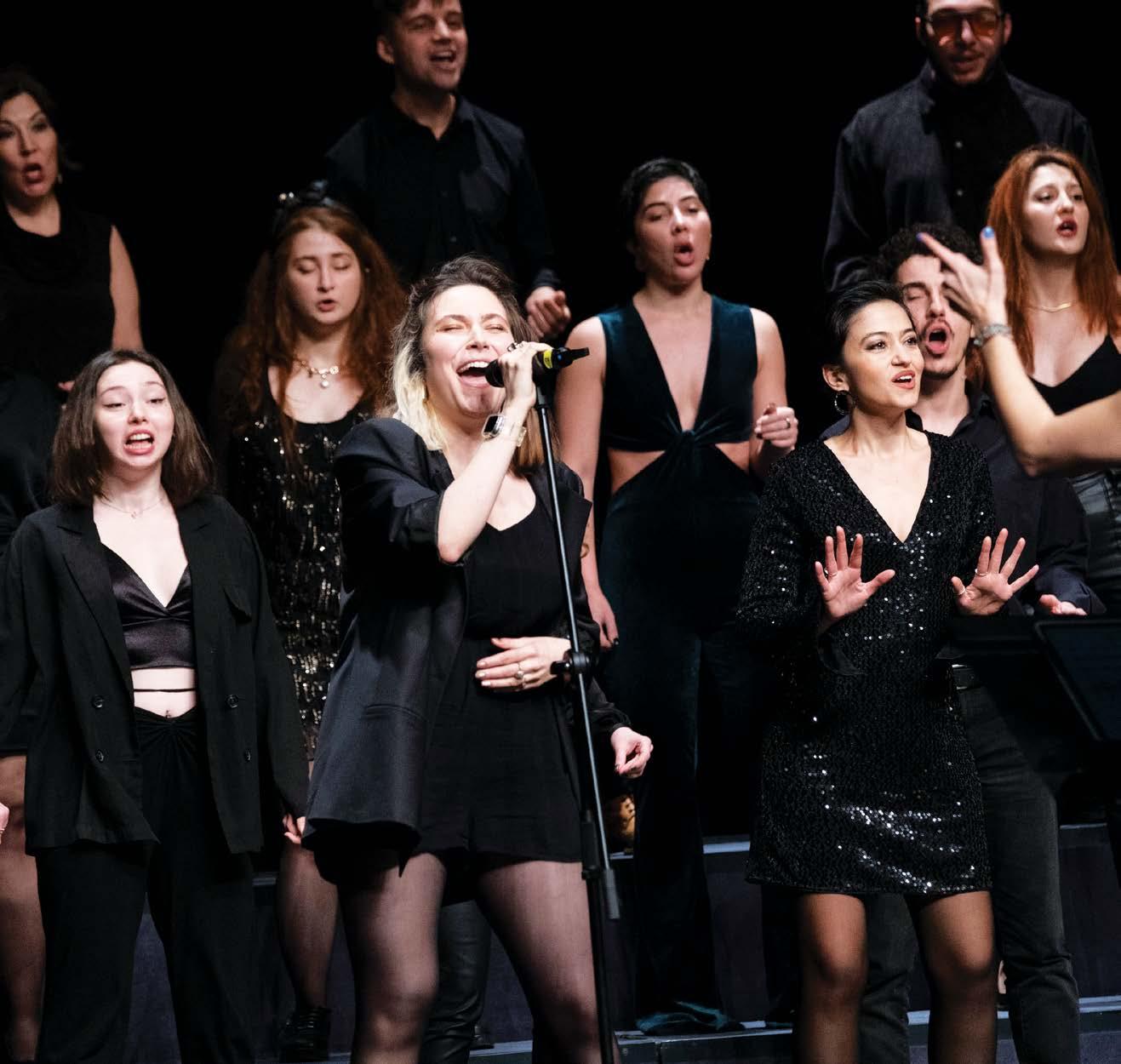 Edited by Laura Massey, UK
Edited by Laura Massey, UK
BAŞAK DOĞAN is an innovative conductor whose unique style has been turning heads around the world. After finishing her Master’s in Philosophy of Music at Boğaziçi University in Istanbul, she got her second Master’s degree in Rhythmic Choral Conducting at the Royal Academy of Music, Denmark, with the thesis ‘Intuitive Conducting’. As a versatile conductor she appears at numerous choral events, leading singers from all age groups and has gained international recognition with her choir Chromas. Best known for blending different styles, Başak has developed a distinctive conducting method. Her enthusiasm for bringing her own cultural background into the choral world has had an impact on rhythmic choral music. Central to her style is “Vocal Painting”: allowing the choir to create “music of the moment”. Her new initiative “Vokal Akademi” has become the center for all the singers who want to take their singing to a new level and further their music career.

Email: basak@chromaschoir.com

THE OFFICIAL DIALOGUE ON CHOIRS AND CHORAL MUSIC BEGAN WITH A SCHOOL TEACHER — MARCEL CORNELOUP, APPOINTED TO HIS FIRST TEACHING JOB IN MOROCCO IN 1948, CO-FOUNDER AND MEMBER OF THE BOARD OF DIRECTORS OF THE "A CŒUR JOIE" (ACJ) MOVEMENT SINCE ITS OFFICIAL CREATION ON NOVEMBER 7, 1948.
At that time, choral music was performed only in churches, a situation that continued until the 1990s, when Morocco introduced music education into the school system. Through a partnership between the national Ministry of Education and the ACJ, under M. Corneloup’s direction, a series of courses for teachers of music education was developed and held at the Rabat regional learning center. Those selected to attend went on to establish choirs in the institutions where they worked. I was one of the lucky individuals who had the opportunity to benefit from those training sessions.
I founded the Chorale Assalam in 1998. This vocal and instrumental ensemble brings together around 20 music education faculty and choral music students, who together strive to bring joy, understanding and happiness to their audiences through various events. The vocal section includes four parts (soprano, alto, tenor and bass). The Chorale Assalam is developing a varied and diversified repertoire from both Western and Eastern traditions, classic and contemporary, including world music in four languages (Arabic, French, Spanish and English).
In recent years, the Chorale Assalam has been immersed in a new experience: working on a repertoire of traditional songs from the Moroccan heritage viewed in a new perspective through the use of polyphony. Thanks to the work of Professor Said Senhaji, who arranged and updated these historically monodic songs, we are meeting the expectations of our current generation of listeners. We have recorded our project on an album, broadcast it on both national and international television channels, and presented it at festivals, representing Morocco in countries including Spain, Germany and China.
The Moroccan Association for Musical Education, which includes student teachers, teachers, and inspectors from the National Ministry of Education of the Kingdom of Morocco, has campaigned for choral music in Morocco since its creation, promoting it through choir sponsorships as well as by the establishment of a space for exchange and sharing that allows choirs to flourish in their art and share it with a wider Moroccan and international audience. To that end, we organized in 2015 the FIRST INTERNATIONAL GATHERING ON MUSICAL EDUACTION IN MOROCCO, giving the major players in music education in Morocco a chance to speak with the two relevant ministries (Education and Culture) and hear from experts brought in from Hungary and France, two countries recognized for their teaching in the arts. The meeting’s objectives were to create a framework for Moroccan and foreign choirs to meet and exchange experiences and to give the Moroccan public the opportunity to discover a distinguished, accessible and popular art.

We actually have an agreement between our Moroccan Association for Musical Education (AMEM), A Cœur joie International (ACJI) and Neemrana France (NF), the purpose of which is to unite the efforts of those three groups in developing partnerships and exchanges in the field of choral music. The partnership has agreed upon these priority objectives:
• To contribute to the training of Moroccan teachers, student teachers and individuals in charge of music education in Morocco through targeted programs.


• To contribute to the training of French choir directors (who belong to the A Cœur Joie network) in the domains of Moroccan, Arabic and Middle Eastern music and song.
We also have longer-term objectives:
• To train school choir directors in all aspects of classroom music education: musical, pedagogical, technical and personal.
• To develop capacities for listening, composition, musical analysis and creation, as well as experience with rhythm games and instruments.
• To foster the practice of singing in classrooms in France and Morocco, and assist in setting up pedagogical projects.

• To develop competencies for organizing concerts: staging and stage direction, choir concert management, and audio and video recording.
• To promote the creation of music aides, scores and automated transcriptions, and the production of training manuals, work CDs and training materials.
SAMIR BAHAJIN is a musician (piano, lute, percussion), a music education inspector, president of the Moroccan Association for Musical Education, Director of the Chorale Assalam and a television host and presenter. He is the composer of famous songs: "Peace" (winner of the 2000 Best Song for Peace prize in Morocco), the operetta "Abtal Athadi" (National Initiative for Human Development [INDH] 2012), operetta "Living Together" (produced by UNESCO), children’s songs on Al Jazeera Children’s TV 2008/2011, and music for Moroccan National Company of Radio and Television (SNRT) program credits. He holds a diploma from the Training Center for Education Inspectors 2010-2011 and received his degree in journalism and communication from the Institute of Higher Studies in Journalism and Communications in 2006. Email: samir.bahajin@gmail.com

IN THE WESTERN WORLD, THE CHORAL TRADITION ROOTED IN THE CHURCH PROMPTED MANY COMPOSERS TO CREATE WORKS WHICH FORMED THE BACKBONE OF A RICH MUSICAL HERITAGE. IN ISRAEL, BY CONTRAST, THE RISE OF CHORAL SINGING IS A VERY YOUNG PHENOMENON ONLY A FEW DECADES IN THE MAKING.
Choral singing in Israel started with the arrival of Jews from all corners of the world to the Land of Israel at the turn of the 20th century. In the 1930s and 40s, with the rise of Nazism in Germany, musicians, conductors, and composers from across Europe gave rise to both vocal and instrumental music. The notable composers from this period who formed the basis for this new vocal culture include Alexander Boscovich, Mordecai Seter, Eden Partosh, Paul Ben Haim, Nissim Nissimov, Yehezkel Braun, and Tzvi Avni. These composers wrote in a style which blended biblical texts from the Old Testament with the reality they experienced in the new country.
The kibbutz was central to the development of an Israeli singing culture. Festivals, communal events, daily life, war, and loss all formed the raw material for composers and a new Israeli creativity.
The Middle East, situated as it is at the centre of international politics and a politically and religiously sensitive area, is home to the three main Western religions: Judaism, Christianity, and Islam. Israel has traditionally been drawn towards the West whereas Egypt and Syria drew influences from the Soviet Union. In the musical melting pot which defines Israel, Arabic music from Egypt, Syria, and Lebanon plays an important part. This
is the music of the Arab citizens, and it is shared by the Jews who emigrated from Arab lands to Israel and have passed it down to their descendants. In Israel today there is a truly incredible and beautiful mixture of the different cultures from both East and West.
In Israel there are around 120 amateur choirs and over 700 vocal ensembles which are called chavurot zemer, which loosely translates as ‘singing groups’. There are four outstanding children’s choirs in the country, plus school and community choirs.
The adult choirs concentrate on artistic singing of a European repertoire, the production of major works with an accompanying orchestra and also Israeli works and folk songs.
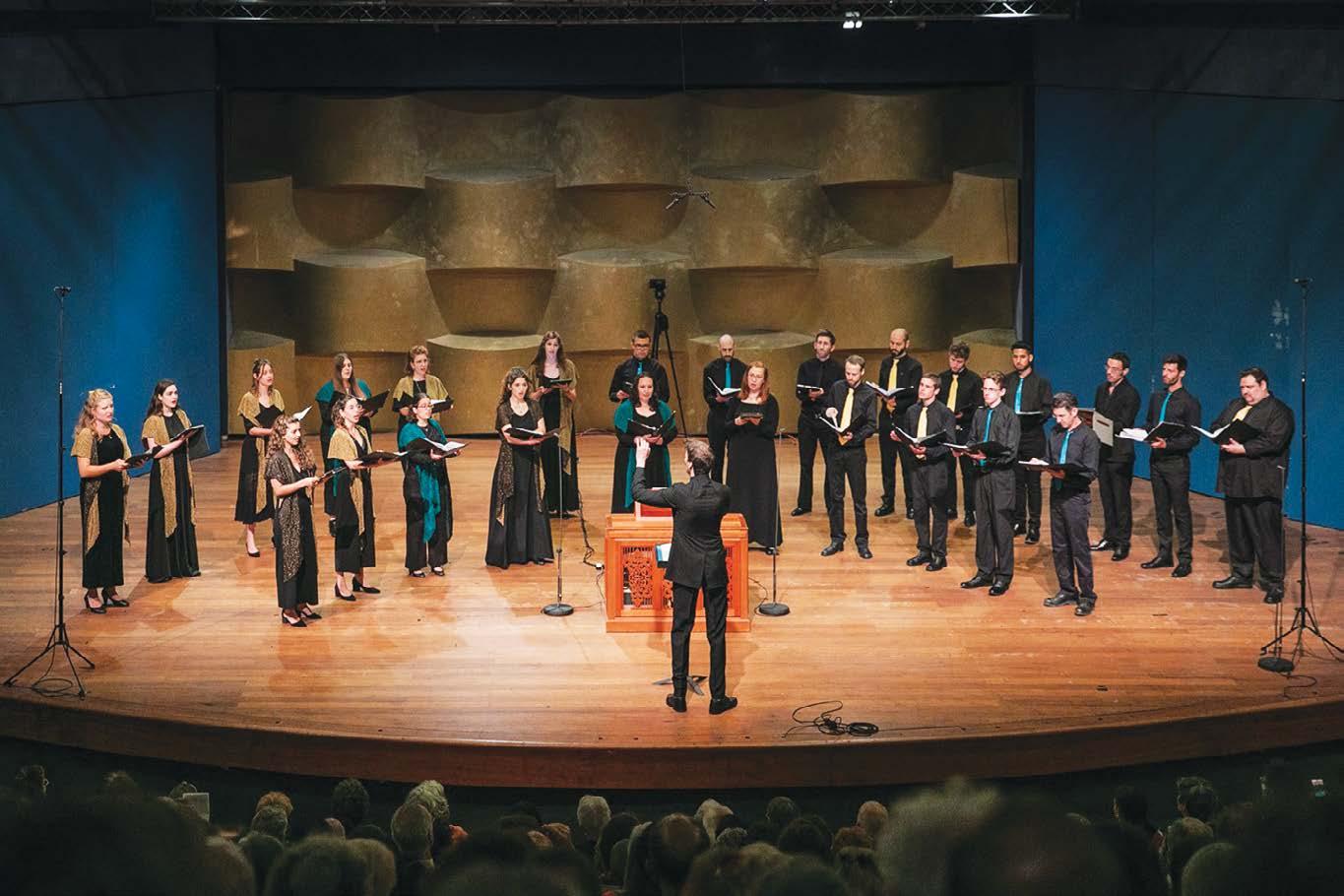
The chavurot zemer focus on simple, popular Israeli songs. Thousands of arrangements have been written by local conductors and are performed at gatherings across the country.
The children’s choirs are the crown jewel of the choral scene. Classic Israeli songs and specially adapted classical pieces are performed together with original works and new arrangements, and these represent Israel around the world.
The gathering of Jews from around the world to the Land of Israel created a mosaic of cultures, rhythms, melodies, harmonies, and texts. These songs have become communal property; they are enjoyed at giant community sing-alongs and are integral to folk dancing. A huge body of folk songs are associated with Memorial Day ceremonies; they commemorate the painful loss of soldiers from the never-ending battles and are filled with nostalgia for the Land. They sing of love and loss and combine the Hebrew and Arabic languages. These songs are threaded into the canvas of people’s daily lives in Israel.
I founded the Moran Choir in 1986 (https://www.moran-choir.co.il/en). The year I set up the choir was truly the happiest of my life. I was a music teacher in Beit Yitzchak, the moshav (village) where I still live. In the small music room, surrounded by earthenware instruments and


instruments that the children had made themselves from natural materials, we created pieces and songs, and our imagination took flight.
Straightaway, once I had a choir, I set out to collaborate with composers. I realised that the inspiration for an Israeli children’s choir needed to come from within folklore, together with original arrangements for the choir. I collaborated with Yehezkel Braun, Menachem Wiesenberg, Haim Permont, Gil Shohat, Josef Bardanshvili, Ella Sheriff, Shlomo
Our motto, ‘whoever sings is happy’ underscores our connection with the community
Gronich, and many other wonderful composers. This connection with the composers has only strengthened over time and today the country’s leading composers, young and old, create works for Moran Choirs.
Today, Moran Choir has grown to become like a pyramid of choirs:
• Cecilia Ensemble: an 8-strong vocal group, made up of professional, classically trained opera singers.
• The Moran Ensemble: 24 young, semi-professional, classically trained singers starting out in their musical careers.
• The Moran Choir: the children’s choir for 11-18-year-olds. This choir frequently represents Israel at international events, most memorably at the signing of the Oslo Peace Accords.
• Young Moran and Moranchikim: the two choirs for young children, from kindergarten to age 11.
• Moran Parents: a choir for adults who love to sing.

Our motto, ‘whoever sings is happy’ underscores our connection with the community. The current, biggest project to date is the national Israel
Vocal Center (HaBayit LeShira). When complete, this purposebuilt, accessible-to-all facility will be home to dozens of choirs, vocal groups and choral projects. In Israel, people understand that singing is a powerful tool for connecting people. It causes us to listen to one another, to be receptive and tolerant. It can build bridges between different cultures and nations and creates both an internal and external language that embodies safety, trust, and a willingness to communicate love and joy.
Edited by Karin Rockstad, USANAOMI FARAN is the founder of the Moran Choirs and its conductor and musical director since 1986. She is a graduate of The Buchmann-Mehta School of Music, Tel Aviv University. She is the recipient of numerous awards, among them Outstanding Conductor at the first International Choir Competition in Israel, the Israeli Ministry of Culture Arik Einstein award for Established Artists (2021) and the Israel Artists’ Union Lifetime Achievement Award (2022). Naomi is frequently invited to judge prestigious competitions and has given advanced master classes in conducting at International Symposiums in Slovenia, Denmark, Hong Kong, China, South Korea, Italy, Spain, and as part of the Europa Cantat. Her vision and energy are expressed through successful results. Moran Choirs currently comprises six separate choirs, with singers between 6-35. Many alumni have forged careers as professional singers on world stages. www.moran-choir.il
The Moran Choirs perform on radio and TV and with Israel’s top orchestras - The Israel Philharmonic Orchestra (IPO), the Jerusalem Symphony Orchestra, Israel Chamber Orchestra, and the Rishon LeZion Symphony Orchestra. They have performed in China, Kazakhstan, the USA, South Korea, and throughout Europe.
WATCH: Moran Choirs Around the World
Intrinsic to this vision is the goal of combining musical excellence with community involvement. Each choir is involved in numerous community outreach projects, such as working with adults and children with learning difficulties, working with marginalized youth, and performing for patients in the Paediatric Oncology Department of Israel’s Schneider Hospital.
WATCH: Moran Choirs - Community Outreach
Moran Choirs’ unique ethos is that the act of singing together is a vehicle for social change. Naomi has presented her working model at academic forums worldwide, including a conference at Yale University.
Other projects of Naomi’s were aimed at promoting peace. Naomi Faran and the Moran Choirs are remembered for their iconic performance at the Peace Concert in Oslo in in 1994, where Israeli children were joined by Palestinian children singing together for peace.
WATCH: Moran Choirs at the Oslo Peace Accords

TODAY IN THE CENTRAL-NORTHERN REGION OF SARDINIA, YOU WILL FIND DEEPLY ROOTED PRACTICES OF MULTIPART SINGING, FOLLOWING THE ORAL TRADITION, THAT ARE BEING CELEBRATED WITH GREAT ENTHUSIASM. THEY INVOLVE HUNDREDS OF PEOPLE OF DIFFERENT AGES AND SOCIAL CLASSES AND ENCAPSULATE CULTURAL VALUES OF COMMUNITY AND IDENTITY.
As a matter of fact, these practices are linked to the culture of individual villages, or paesi, and constitute one of their salient and recognisable traits. These singing practices accompany important moments in people’s lives, such as the coming together of friends, celebrations, and important religious rituals like Holy Week.

Here we are talking about polyphonic arrangements in real parts for four male voices. They share similar structural characteristics but differ in some aspects relating to vocality (in particular, timbre) repertoire and contexts of use. The four voices in fact overlap, mainly to form root position chords (1-8-5-10), and usually move in parallel. In most of the villages these voices are named (from lowest to highest): bassu, còntra, boghe, and mesu boghe.
This structure brings together two key styles from the Sardinian tradition of polyphonic singing, which today, to put things very simply, are known as canto a tenore, in which the lowest parts are characterised by a deep, coarse, guttural sound, and canto a cuncordu, in which those voices have a natural sound.
These styles therefore make up two sides of the same coin. If we wish to distinguish them more clearly, we can say that, while the so-called canto a cuncordu lends itself towards the performance of religious texts (paraliturgies, liturgies, and devotions) the canto a tenore has an eminently more secular feel, leaning as it does towards love and satire, even social and political themes. This said, both styles are seen as having sacred and secular dimensions.
As much as the expression cantu a tenore is today accepted as the description of the genre as a whole, it is good to be aware that this is only one of the many names that this singing is given amongst the different
communities which describe it. Other descriptors, for example, are cuncordu, ussertu, cuntzertu, and consonu
In fact, each village has its own particular style (or moda, traju, tràgiu, tradzu, or tratu, depending on the area) which makes its song distinct and unique. These styles result from differences in the areas of vocal emission, timbre, and the kinds of “nonsense” syllables employed, just as different typologies of singing differ in their rhythmic aspects and melodic models. This means that each community of the more than 70 in which this type of singing is common today expresses itself through the idiosyncrasies of its own singing, and that these idiosyncrasies are recognised by the broader community of singers and afficionados.
In as much as it is considered an expression of rural life, especially that of the central region of Sardinia, Barbagia (with its villages of Orune, Orgosolo, Bitti, Maoiada, Fonni, Lodè, Oniferi, and others), the genre is today widely practised by people of all ages, from all walks of life: shepherds, farmers, workers, professionals, teachers, etc.
Observing and listening to a performance of canto a tenore, we immediately note that, apart from the strong and unmistakeable timbric character, the central feature of this practice is the interplay created between the leading voice (called sa boghe, or la voce—“the voice”—by way of antonomasia) and the other three parts. This voice is in fact the only one to utter the words of the text, whereas the others accompany him with “nonsense” syllables (bim-bam-birambambò; bam-bam bambarà; lelle-re, etc) The sa boghe is expected to choose the text to sing, depending on whether it is an excerpt from an a sa seria or a dance (see below), and will put forward a solo line to which the other three voices will respond, alternating between the solo and chorus parts. The chorus parts will intervene to support the soloist with small melodic sections that vary depending on the style of the village. Of the four parts, normally the bass line will be the most static, pulsing the same note without changing its pitch.
Other not insignificant factors are the physical arrangement of the singers—in a circle, or with sa boghe slightly off-centre their posture, and their facial expressions, all of which underscore the mood of the song.
Singers from the various villages perform texts in the Logudorese dialect of the Sardinian language, which is spoken in the central-north of the island. The repertoire usually consists of three main genres:


1. sa boghe a sa seria (where boghe—“voice”—is synonymous with “song”) or bogh’e note (“song of the night”) in which the choice of text is particularly important. These texts often come from the works of the great Sardinian poets from the 18th and 19th centuries or from contemporary poets. The songs consist of two main sections: s’isterrida (the introduction), which establishes an alternation between the soloist and the chorus, and sa zirada (“the turning”) which is the central part of the song, and where a change to the rhythm invites the chorus in to overlap with the soloist.
2. sa boghe a ballu, designed to accompany a dance, and in which the text is almost an excuse to rhythmically verbalise the dance. These songs are characterised by the marked rhythm articulated by the lowest voices. The repertoires of the individual communities consist of up to four categories of dance which use texts set to different types of meter.
3. sos mutos, polyphonic intonation of a particular type of poetry from the oral tradition.
Generally speaking, the themes sung about by groups performing a tenore circle around love, although this does not exclude references to the traditional culture of the individual villages, satirical texts, and even political and social commentary. Although much more
restricted when compared to the secular, the sacred repertoire includes mostly songs of praise (gosos) and pregadorias (“prayers”).
Moreover, when composed of just a trio (Bassu, Contra, Mesu-boghe) the tenore accompanies poets in improvised performances of verse in ottava rima (a form of rhyming stanza in poetry of Italian origin) Such performances are typical of the Logudorese linguistic area and still have a large following today in villages across the island.
Just as in the past, canto a tenore is still performed today in a range of informal contexts: in bars (tzilleris), during religious, civil, and family festivals, and at the so-called ispuntinos (convivial gatherings of groups of friends, often occurring in the countryside). Night-time performances, however, are no longer common today. In the second half of the twentieth century, this “private”/community dimension was joined by another, initially tied to folk events funded by state and regional tourism bodies. This led to the formation across villages of fixed quartets which performed on stage at festivals or in shows and at concerts, both in Italy and throughout the world. Moreover, the formation of these groups has supported, since 1960, the creation of a huge commercial discography, especially at the local level. It was this expansion outside traditional contexts which allowed canto a tenore to be included in UNESCO’s List of Intangible Cultural Heritage in 2005.
Browsing the web, it’s easy to come across sites which define canto a tenore with adjectives like “archaic”, “ancestral”, or other words which bring to mind its origins in the Nuragic period (Bronze Age) or its derivations in the imitation of nature sounds and animal
noises. This fails to consider how impossible it would be to establish the precise point in history at which a musical oral tradition began, particularly given that the few historical sources which mention this style of singing come from the late 18th century, if not the 19th century. The first 78rpm of this style of singing was only made in 1929, while intensive campaigns to make audio recordings of it were mounted by scholars from the 1950s onwards. At the same time, we need to seriously reconsider all of those “naturalistic” theories from the past, which often originate from within the group of the canto a tenore faithful and get picked up by various authors. While on the one hand these could be considered effective metaphors for the soundscape of the agropastoral world, they don’t have any scientific basis. On the other hand, there are a range of clues, starting from the structure of the chords or some of the terms found to have been employed locally to indicate the practices or different voices (cuntzertu-concerto, tenore-tenor, bassu-bassus; contra, contra-tenor, cuntraltu-contra altus etc) which lead us to hypothesise that there is a connection between the forms of late-Medieval and Renaissance European polyphony: such as, for example, the so-called “falsobordone”.
In a recent census, it emerged that over 3000 people in nearly 70 Sardinian villages sing a tenore, and that a significant proportion of them are less than 30 years old. This is perhaps the best evidence that, despite the global stage on which contemporary life takes place, this practice of multipart singing, wrongly considered archaic, has the capacity to fascinate, involve, and express the emotions of those living here and now.
ROBERTO MILLEDDU is Adjunct Professor of Ethnomusicology at Palestrina Conservatory of Cagliari. His research areas range from organology to historical ethnomusicology and multipart singing. He is interested in the relationship between mass media and oral tradition musical practices. He has published articles and monography on Ethnomusicology, Organology ,and Music History issues. He collaborates with Labimus (Laboratorio Interdisciplinare sulla Musica) of the University of Cagliari on major national and international research projects. Email: raxmeger@gmail.com


MESSAGE FROM THE PRESIDENT
CHRIS ARTLEY: ON THE ROAD OF LIFE WINNER OF THE IFCM COMPOSITION COMPETITION 2022
Interview by Irvinne Redor
WSCM 2023 BACKSTAGE
Presentation of the WSCM 2023 local team
TOGETHER IN HARMONY AMERICA CANTAT 10
CONDUCTORS WITHOUT BORDERS IN ARGENTINA
 EMILY KUO VONG IFCM President
EMILY KUO VONG IFCM President

At the beginning of the first quarter of 2023, a beautiful video was played on multiple platforms all over the world to celebrate the Lunar New Year. This video was produced as part of a collaborative project between the IFCM and the Ministry of the Culture and Tourism in China and featured the World Youth Choir (WYC). We invited more than 100 singers from different countries to sing the song “A World Filled With Love” together.
Although we are involved in worldwide conflict, facing challenges of different cultures and political opinions, we still believe singing for love will bring the power to overcome all the difficulties and build solidarity between all people. Just like the lyrics in the song “A World Filled With Love,” “We enjoy the joint happiness; We share each other’s difficulty; We have the same expectation. We go through challenges together; We make efforts for the dream together; We treasure the same love in our hearts.”
Our international member, Pueri Cantores, published a good article in this issue of our International Choral Magazine regarding the International Choir Festival of Pueri Cantores in Florence, last July. I, as the President of IFCM, was happy and honored to be invited to participate in this marvelous festival, and I can say that they organized a very successful choral event.

What impressed me most during this festival were the thousands of singers singing “Hallelujah” together at the Cattedrale di Santa Maria del Fiore. Under the beautiful Tuscan sun, at one of the most magnificent cathedrals in the world, people forgot the differences between cultures and religions, singing for peace and with happiness in their hearts!
After the festival, I am very glad to announce that the Vice-President of Pueri Cantores, Matthias Balzer is interested in cooperating with the IFCM and we are embarking on some potential projects. I am confident that Pueri Cantores will have a pleasant cooperation with the IFCM and that we will achieve a lot together. I also hope all of our international members, national members, and individual members are positive in seeking opportunities to co-work with the IFCM and don’t forget that the IFCM is always open to serving our members and contributing to the development of global choral music.
Best wishes
Edited by Laura Massey, UK INTERVIEW BY IRVINNE REDOR IFCM Communication Manager
INTERVIEW BY IRVINNE REDOR IFCM Communication Manager
LAST YEAR, IFCM LAUNCHED THE NEW WORLD CHORAL DAY ANTHEM ENTITLED, ON THE ROAD OF LIFE . THIS WORK IS BY AN ENGLISH COMPOSER LIVING IN NEW ZEALAND, CHRIS ARTLEY. I WAS VERY FORTUNATE TO GET A CHANCE TO CHAT WITH HIM EARLY THIS YEAR GIVEN HIS BUSY SCHEDULE WITH PERFORMANCES AND INTERNATIONAL COMMISSIONED WORKS HE IS WORKING ON. HE IS INVOLVED IN THE TEAPOT SUMMER SCHOOL, NEW ZEALAND’S PREMIER NON-AUDITIONED CHORAL SCHOOL, THAT TAKES PLACE EVERY MID-JANUARY. FOR THE PAST 12 YEARS, CHRIS HAS ALSO BEEN PART OF THE GRADUATE CHOIR NEW ZEALAND LED BY THEIR MUSIC DIRECTOR, TERENCE MASKELL.
How did your relationship with choral music start?
I’ve got to say, I was a rather reluctant child singer much to the dismay of my parents. It was only when I was probably 17 or 18 that I started getting involved with choral singing in the school choir. I really wish I’d done some singing as a child and that would’ve been very advantageous. When I was in London, which was nearly 20 years ago, I didn’t do any singing. For the first few years here in New Zealand, I was not really involved with choral music except for an annual event – the
Teapot Summer School – which actually has been very influential for my composing career. Whilst in London and Auckland, I’ve played in a few jazz and blues bands.
I’ve always thought that you were born in New Zealand! What made you move to New Zealand?
I was teaching in London and being there at the school for a long time, it got to the point where I wanted a change. I looked in the teacher’s paper and it said “Wanted: Head of Music at Boutique Girls Private
School in Auckland.” At first, I just laughed and thought that’s a bit crazy and then I thought, maybe this could be a good idea. I applied for it, was offered the job, and then spent three weeks humming and hawing whether to take it, and then took the job. There have been times when there’s been a bit of homesickness, but on the whole, it’s worked so well. There is a very, very strong choral scene in New Zealand! It’s quite astonishing considering the size of the population.
It’s interesting to know that you were born in the United Kingdom. Is it something that influenced your composition style?
Oh, very much so! What I write is very much influenced by music from the UK. I have thrown in a few New Zealand elements in the last few years, primarily the use of Te Reo, which is the Māori language. Most of what I write, however, is influenced by traditional Western European music, together with elements from the American choral music scene too.
I’ve recently written a work entitled Papatūānuku (Earth Mother in Te Reo), scored for double choir, organ, clarinet solo, and taonga pūoro (traditional Māori instruments), which we performed at Teapot Summer School in January 2023. This combines traditional choral writing with overtone singing, bird song motifs on organ, and clarinet, together with a wide range of improvised sounds on the taonga pūoro. It finishes with a short karanga, which is sung by a wonderful young Māori soprano. This piece has a lovely blend of styles and is the closest that I have come to writing a uniquely New Zealand sounding choral piece. Most of the things I write are actually intended for the international markets, whether it’s commissions or competitions.

Speaking of competitions, maybe you could tell us more about On the Road of Life? How did you come up with the work?
Looking closely at all the details, it says writing for upper and lower voice, so two parts. I think the piano accompaniment was optional, but I thought that would be really good and it had to be something that would reflect the right sort of values for the World Choral Day. I’m very fortunate to collaborate with a brilliant lyricist, Michelanne Forster. I always have to work with someone on the text or find a poem or starting points. Once I got the text, though, it was pretty straightforward. I know you asked me my influences and I think with that song, it was almost more along the Elton John line. It was more pop-like in style than a lot of things I write, but I thought that suited the words and I wanted something that would be very appealing to lots of people. Even with a fairly simple song like this, I was thinking “How can I keep the listeners’ attention throughout?” and not make them think, “Oh, we’ve heard that already.”
Do you have any reminders that you would want people to know regarding the piece?
It’s pretty self-explanatory in terms of what’s in the music and if they want to throw in a bit of extra instrumentation, that’s fine. If people are going to add a couple of their own verses and chorus, as a matter of courtesy, please get in touch and show me the words first. That would be appreciated! No need to ask if they’re just adding one or two instruments, but if there’s going to be any changes, then I think it’s important to ask and check. If anyone does perform the piece and a recording is made, I would love to hear that. Also, if they would let their local performing rights society know about it, that would be much appreciated.
Is there anything you regularly do outside choral music?
I enjoy playing tennis and gardening. I love going on cycling holidays and walking holidays. Those are probably the things I do actively these days, but I also enjoy playing board games like Chess and Scrabble as well.
I’m always looking out for competitions, I’ll certainly enter a few more. Choir seems to be my speciality, but I’m also keen to write more instrumental music. Long term, it would be lovely to write either a symphony or a piano concerto with some jazz elements to it. The thing is, I’ve got a full-time teaching job, so I always have to weigh up how much I can take on in terms of big projects and how to fit them in.
I’m always interested in hearing from choirs. They can just visit my website, www.chrisartley.com. My official Facebook Page is Chris Artley – Composer and I’ve got my personal FB profile and Instagram which are also called Chris Artley.
Edited by Patricia Abbott, CanadaThe winning piece in the World Choral Day (WCD) category of the IFCM 2022 International Choral Composition Competition was selected among 19 scores by a jury composed of international choral experts. Our official WCD Anthem until the end of 2023 is On the Road of Life by Chris Artley from New Zealand. You may download the resources for the music here: https://bit.ly/AnthemWCD22-23. Vocal guides and recordings were done by Alexander L’Estrange and Joanna Forbes L’Estrange.
World Choral Day is an international choral event to extol the values of solidarity, peace, and understanding. Since 1990, thousands of choirs have been joining in the celebration of the WCD on or around the 2nd Sunday of December

The World Symposium on Choral Music (WSCM) is taking place in Istanbul on 25-30 April. This huge event is an exciting challenge for both IFCM and the local organisers. Let us introduce the managers of the different departments, before we all meet them soon in Türkiye!

The director makes sure we offer the best WSCM Istanbul experience possible and works actively with all the organization’s offices.


The Coordinator role involves coordinating the different symposium offices, as well as handling administrative issues in collaboration with the symposium director to ensure that all procedures of the event progress as planned for a wonderful WSCM2023 İstanbul experience.





We manage the Festival Office, which takes care of all the people that will come to WSCM 2023. We manage the registration process and the info desk, ensuring that all participants and musicians know how to navigate the symposium and the city. We plan and organize the WSCM Expo, and handle communication with all presenters, choirs, participants and exhibitors. We are also responsible for hosting VIP meetings and protocol events, providing accommodation and transfers for our choirs, board members and VIP guests, and also making sure they have a tasty lunch in between their busy symposium schedule.
In the music office of the World Symposium on Choral Music 2023, we are working to ensure that the Symposium is unforgettable by gathering choirs from all around the world, arranging spectacular venues for the performances and preparing a programme where everyone can find content for their interest. From concerts to workshops, masterclasses to presentations, we wish to offer a rich variety of activities for everyone.
We carry out the communication of the symposium on all digital channels. We are introducing changing horizons, this year’s theme of the symposium, together with the choral culture in Istanbul and Türkiye.
During the symposium, we will continue to announce the most memorable and enthusiastic aspects of the events.


As the volunteer team, we continue our preparations to make sure that WSCM participants fully experience the history of choral music in Türkiye and Istanbul. Our volunteers will be assisting with the famous Anatolian hospitality, so that the participants can get the most out of the well-designed content of WSCM.
As the Turkish Music Commission, we are trying to make the Extended Program and Turkish Program the most enjoyable and productive for the choirs, the presenters and you, the participants. Furthermore, we are working to bring you the common benefits and support we can establish through gathering of a large number of choral communities. We are already very excited and happy for the positive effects that the symposium will have among the global and Turkish choral music and communities.
D Event, Organization Agency




D Event Tourism is a full service agency offering meeting and event management services in every aspect of an event. D Event Tourism acts as the organizational secratariat, managing general organization and logistics together with the Symposium Team for WSCM, which will be held in Istanbul in April 25-30, 2023.
With D Event’s motto “Always As You Planned”, our goal is to make WSCM a memorable event. Our team is honored and happy to be part of this wonderful event and can already feel the enthusiasm from participants. We look forward to welcoming you and having a fantastic time in Istanbul, Türkiye.
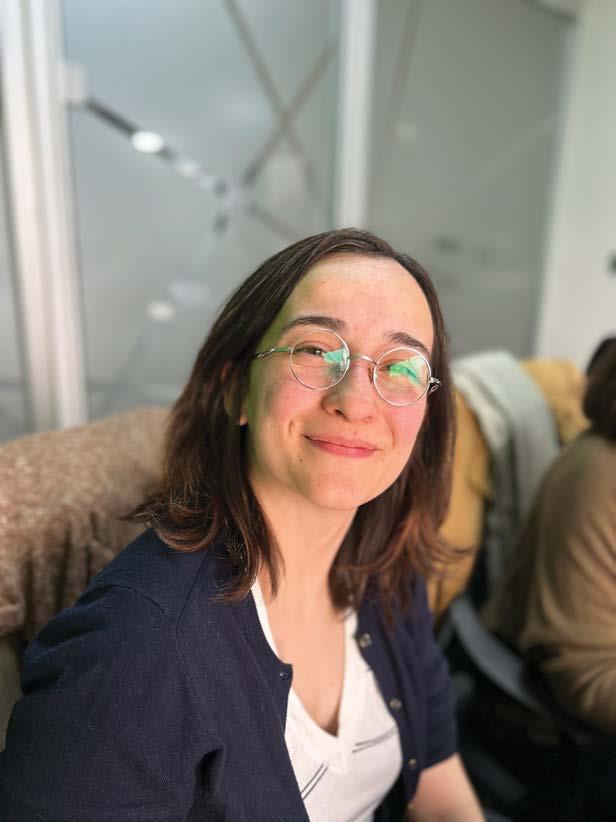

While operating on all communicationchannels, especially with a digital focus, we make sure to position Istanbul and Türkiye as one of the leading hubs in the world for a new and broad understanding of choral music.
As the guest officer, I keep in touch with our guests before and during the symposium and ensure their needs are met. We hold the meetings of the Artistic Committee, Administrative Committee and the Board in Istanbul. Together with the organization agency, we take an active role in ensuring that these meetings and the symposium go smoothly for our guests.
As the host organization, we would like to help the Turkish choral community to effectively engage in the symposium. To this end, we have implemented several actions, from designing a local program for Turkish participants, to reaching out to key actors in the sector to ensure direct communication and cooperation with them. We want to make sure that there will be a fruitful and long-standing relationship between our local choral community and the choral world during the symposium. Our efforts will last until the end of the symposium, perhaps extending into the coming years with new international engagements and events.
 Edited by Charlotte Sullivan, UK
Edited by Charlotte Sullivan, UK

 Galip Dede Caddesi leads from the end of İstiklal Caddesi down to the Karaköy area of old Istanbul. Along the steep, cobbled-stone street are music shops featuring traditional Turkish instruments © Ki Adams
Galip Dede Caddesi leads from the end of İstiklal Caddesi down to the Karaköy area of old Istanbul. Along the steep, cobbled-stone street are music shops featuring traditional Turkish instruments © Ki Adams




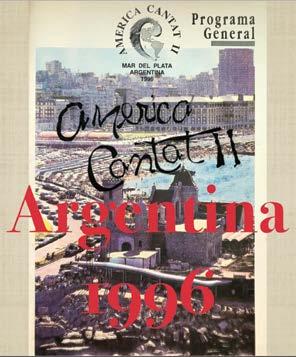
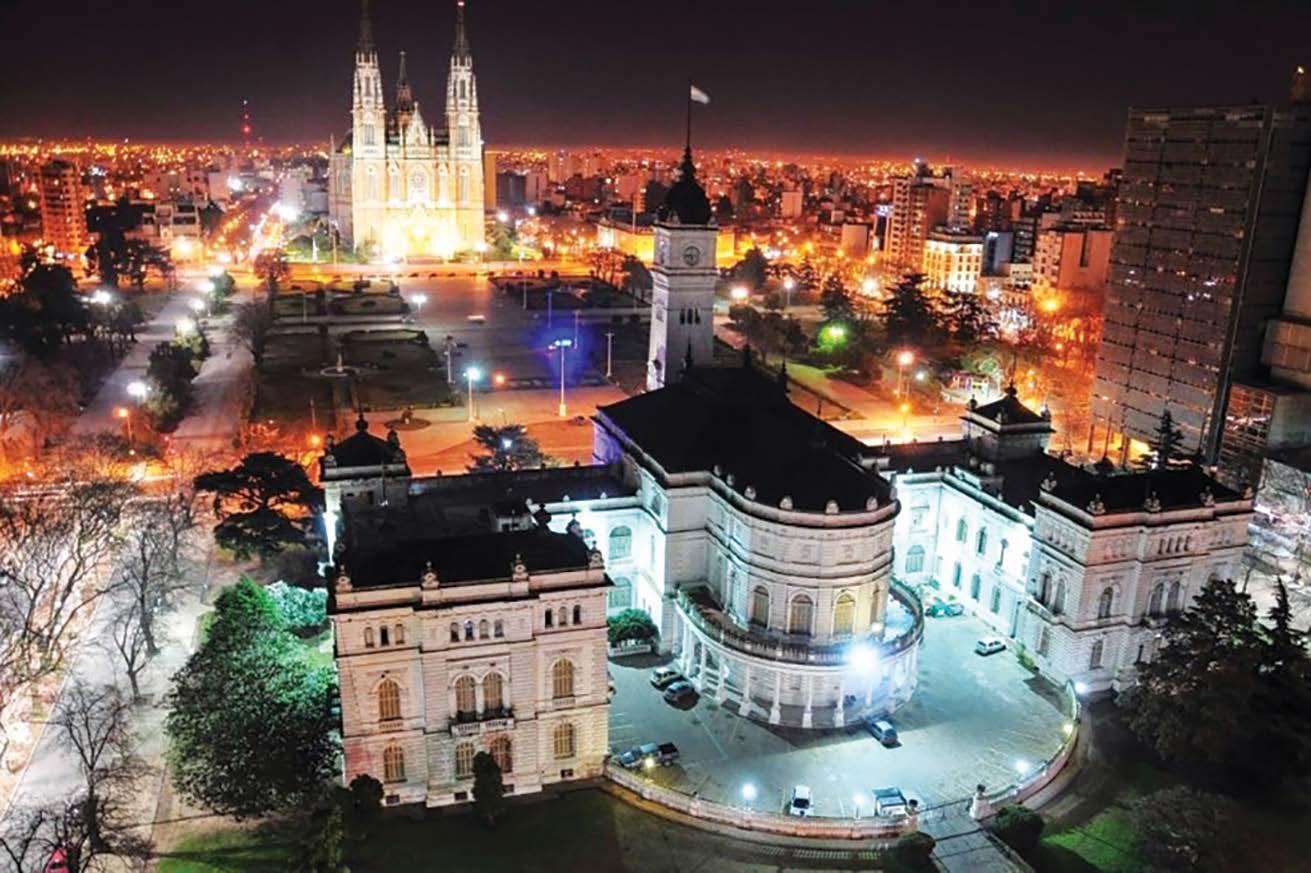
This year, America Cantat turns 30. It was founded in Argentina on 12 October 1992, and we will be celebrating this anniversary with joy, having toured throughout the Americas. Since its founding, America Cantat has travelled across each of the four regions: Argentina, Venezuela, Brazil and Colombia in South America; Panama in Central America; Mexico in North America; and Cuba and the Bahamas in the Caribbean.



Those who join us for this celebration will be able to choose from several workshops on the preparation of works led by internationally renowned musicians, such as Cuba’s Digna Guerra with her workshop ‘Silvio’, dedicated to the works of Silvio Rodríguez with choral arrangements by Eduardo Ferraudi; Spain’s Elisenda Carrasco with her workshop ‘The Voice of the Rainbow’ for children’s choirs;
Colombia’s Cecilia Espinosa, who will be offering a range of ‘Contemporary American Music’; Brazil/Uruguay’s Federico Trindade with ‘Popular Brazilian and Uruguayan Music’; Venezuela’s Mabel Troia with ‘American Music with African Roots’; Argentina’s Viviana Bognar, who will be working with sections of Camilo Matta’s work ‘Carnaval de los Andes’; and Argentina/ Switzerland’s Leonardo García Alarcón with his workshop ‘Utopia’, which gives an overview of the Renaissance and Baroque movements and of Spanish and Latin American Baroque music.
There will also be lectures by celebrated maestros such as Roberto Saccente and José María Sciutto, who will be pulling out all the stops; from them, we will learn about styles, rehearsal techniques, aspects relating to their areas of expertise and much, much more.
There will be concerts by prestigious choirs such as the Coral Femenino de San Justo, conducted by Roberto Saccente, perhaps one of the most award-winning Argentinian choirs since its founding by its current director 68 years ago, and the Coro Nacional de Música Argentina, conducted by Guillermo Tesone, which will be premiering winning works from the Ibermúsicas composition competition.
Furthermore, all choirs taking part who would like to give concerts will be able to do so in various halls at the festival’s location in the city of La Plata – Provincial Capital of Choral Singing, as designated by provincial law and municipal ordinance – or similarly in Buenos Aires.

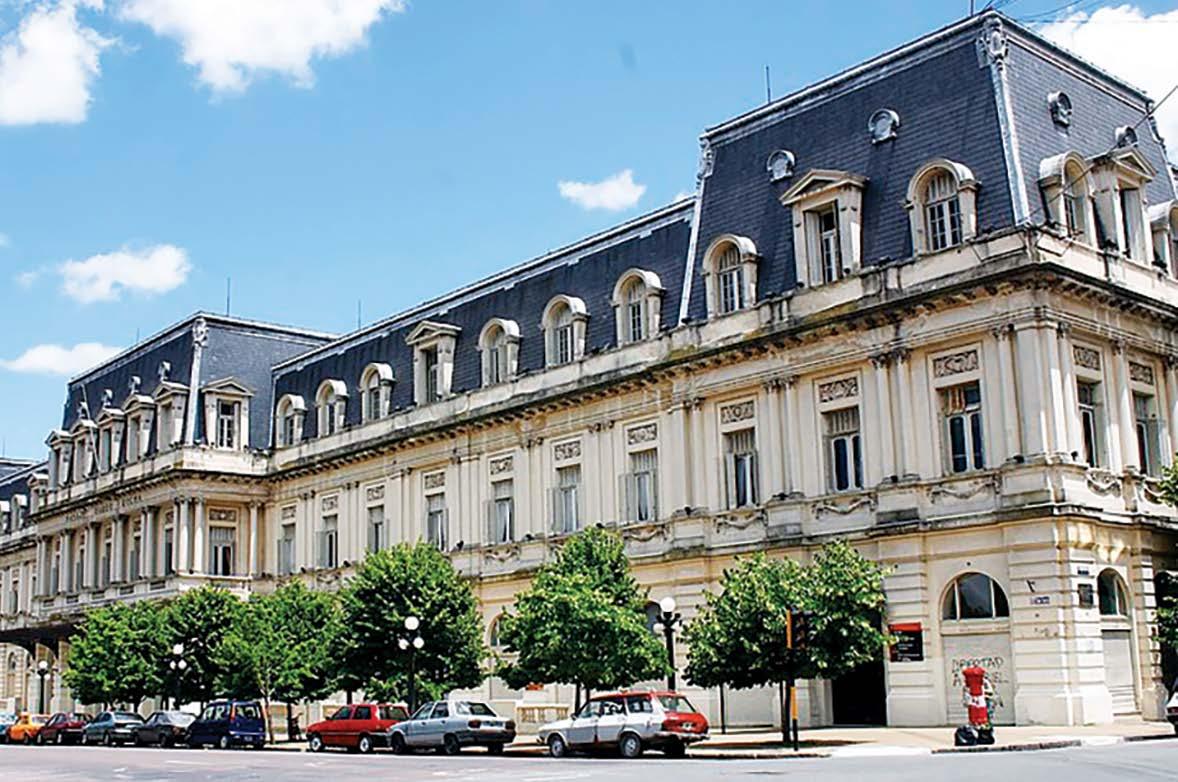
https://www.aamcant.org.ar/ aamcant2/america-cantat-10
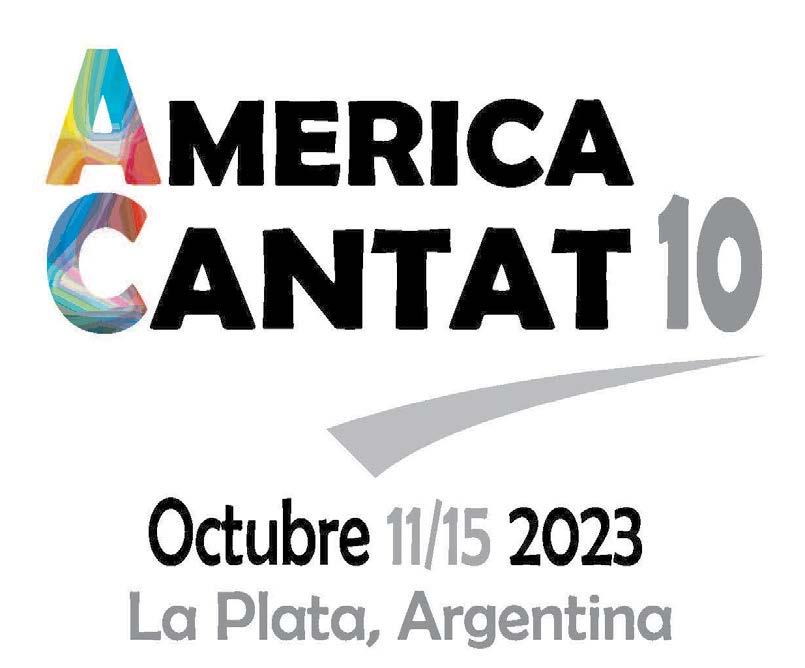
~ The Handy Music Score Decal ~









Iadmit a score printed on your arm is no match for a genuine folder from MUSICFOLDER.com. And that’s too bad, because with our current supply-chain issues, manufacturing upgrades and relentless demand, some of our folders are temporarily out of stock. I sincerely apologize – but if you order from our website now, we’ll book you into our production runs and get your folders to you in the shortest possible time.
 Ian Bullen, President
Ian Bullen, President
Thanks for your patience! They’re worth the wait.

MARIO FIGUEROA
PERSUANT TO THE AGREEMENT BETWEEN THE FEDERAL ARGENTINE CHORAL CONDUCTORS ASSOCIATION (OFADAC) AND IFCM, THE “CONDUCTORS WITHOUT BORDERS” (CWB) PROGRAM WAS ESTABLISHED IN ARGENTINA IN 2018. IN 2019 PROJECTS WERE BEGUN IN HUILQUI, MENUCO (NEUQUEN) AND MIRAFLORES (CHACO), AND IN 2022 OFADAC ADDED FAMATINA (LA RIOJA) AND ALGARROBO DEL ÁGUILA (LA PAMPA).
CONDUCTORS WITHOUT BORDERS IN FAMATINA (LA RIOJA) SEPTEMBER 9-17, 2022

Maestro Máximo Diaz writes: “The course took place with children brought together spontaneously, led by local teachers. During the mornings, we traveled to schools, assisting rehearsals. We visited eight schools in Campana, Pituil, Chilecito and San Miguel.

Maestros Rubén Videla and Mario Figueroa were tapped to bring the program to fruition.
After a general convocation, a selection committee made up of Marisa Anselmo, Roxana Muñoz, Rubén Videla y Mario Figueroa named the session leaders of Conductors without Borders in each location:
• Famatina: Máximo Díaz Ríos (Chile) - Laura Favre (Argentina).
• Algarrobo de Águila: Romina Paula Fernández (Argentina) - Cecilia Pinazo (Argentina).
They also designated Liliana Sanchez (Argentina) and Analía Miranda (Argentina) for a future location in Patagonia.
OFADAC had previously organized two projects during the pandemic, led by Marisa Anselmo and Roxana Muñoz, the first two CWB sessions in Argentina, together with Mario Figueroa and Rubén Videla:
• Roundtable-workshop “Conductors without Borders – the Argentine Experience” which took place online on October 24, 2020, with participation from professionals from across Latin America.
• Introductor y workshop (November 20, 2021), tailored for graduates of the second Argentine session.
What we experienced provided a broad panorama of the choral reality in these localities, where choral singing is a real need, and where it is urgent to
be able to connect and support music teachers in an ongoing way.
We finished with a closing concert with the particpation of School 4 in Famatina and the children’s choir “Maestra Olguita of Chilecito”. Three teachers conducted, and we ended with a joint work for the two choirs. The hall was full, with both audience and local authorities moved by the experience, which had never been seen before in Famatina.
CWB was an enriching experience for all who experienced this process. I returned to my country fully conscious of the choir director’s responsibility to make music available to children of all backgrounds, for whom thirst for music may lie hidden in a corner of their hearts.”
Maestro Oscar Escalada (observer for OFADAC) relates:
CWB took place in Famatina, and expanded to four other provincial districts in La Rioja: Chilecito, Pituil, Campanas and San Miguel. In Famatina, we worked with the support of the leadership of School
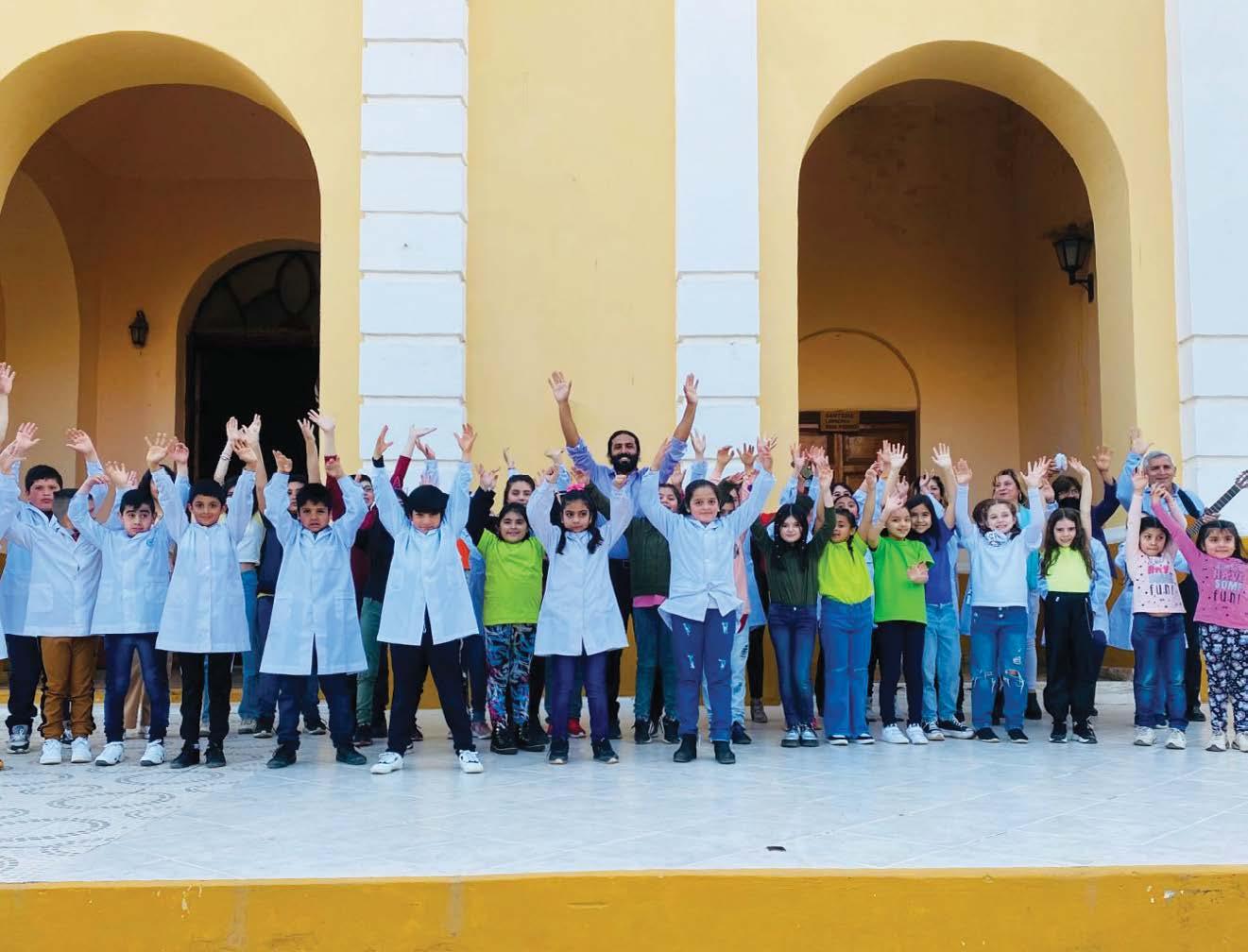


4, where the teachers who were enrolled in CWB had their aftenroon rehearsals. The local teachers traveled far and wide, in some cases up to 150 kilometers round trip from their homes to the teaching site.
In the closing concert, the local Director of Culture announced the formal decision to create the Children’s Chorus of Famatina with a dedicated budget, as well as an agreement with the Provincial deputy to move forward a new directive to establish a choir in every school in La Rioja province.”

12-17, 2022
Algarrobo del Águila was proposed to CWB by the Choral Association of La Pampa, a member of OFADAC. The region is inhabited by descendants of indigenous people, who suffer from desertification due to the interruption of the upstream riverbed.
Maestro Mario Figueroa traveled there to draw up a plan of action with Beatriz Branca, Director of local Culture and Oscar Gatica, Municipal Mayor, and arranged with the Ministry of Education of the Province of La Pampa for the teachers in the course be recognized and rewarded with higher teaching rank.
Romina Fernandez writes:
“During our stay we had the opportunity to experience and develop, together with Paula Castrilli, the formation of a children’s choir in a locality disadvantaged by the loss of the river and the man-made climate change that is typical of arid and infertile areas. At the same time, we were blessed by


a highly receptive community eager to experience and learn from the formation of the children’s choir.
In each of the classes the teachers were beautifully prepared. The debut concert of the Children’s Choir of Algarrobo del Águila was given to a packed house of parents, friends and neighbors, and ended with families singing together with the choir with great enthusiasm and emotion.
A thousand thanks to the Directors without Borders program, under the auspices of IFCM and OFADAC, for selecting me to bring to fruition this excellent work, and also to the Choral Association of La Pampa and the officals of Algarrobo del Águila.”
“For me, participating in the Conductors without Borders program was an opportunity to reflect on the professional practice of the choir directors in the region.
Although, at first, it was intended to work only with school-age children, the local beginning level teacher proposed extending the program to early childhood as well.
In a town of approximately 650 inhabitants, the closing concert was given to a full room, in a festive and emotional atmosphere, demonstrating the potential development of the program and the possibility
of choral singing in the community.

Participating in CWB allowed me to confirm the fundamental role of collective singing in building community identity, the potential of local/national/ international development, and clarified the role of the professional choral director.”
In total, we can affirm that the CWB Program was developed with notable success in Argentine venues, maintaining its founding spirit: to provide well qualified professional musicians and instruction in regions where distance, isolation and socioeconomic limitations have impeded the development of choral singing.
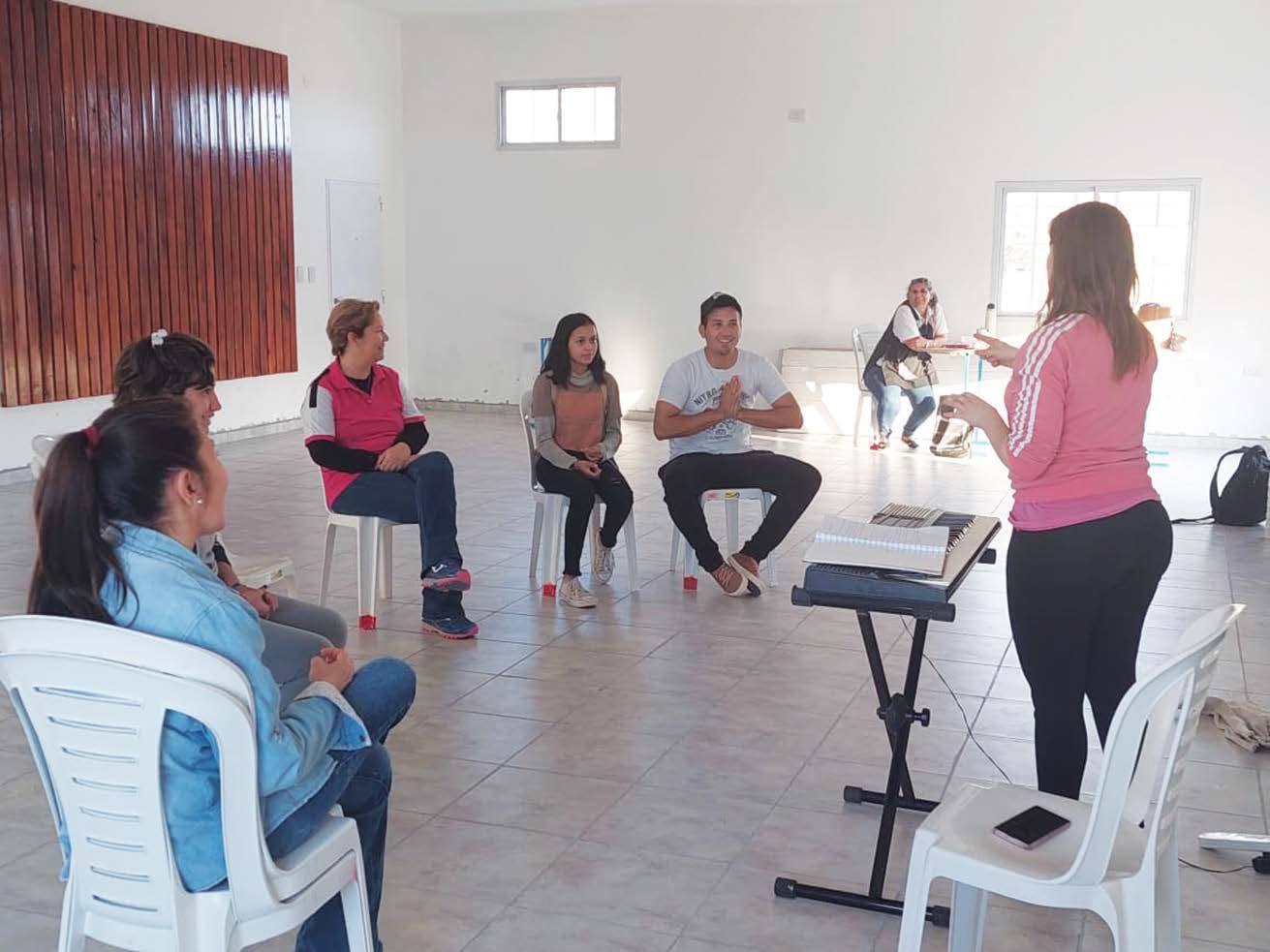
Translated from Spanish by Joshua Habermann, USA

is President of the Asociación
Coral de La Pampa (Argentina) and Vice-President of the Organización Federada Argentina de Actividades Corales (OFADAC). He is a member of the National Choral Council of the National Institute of Music (INAMU) and of the Trade Commission of the Association of Choir Directors of the Argentine Republic (ADICORA). As a composer and arranger, he has published works in Argentina and Germany, as well as working as an advisor to the Choirs, Orchestras and Ensembles Programme of the Ministry of Education of La Pampa (Argentina). Email: mariofigueroalp@gmail.com

MATTHIAS BALZER
Choir conductor and organist, Germany
FROM JULY 13TH -17 TH 2022, ABOUT 2500 CHILDREN AND YOUNG PEOPLE MET IN FLORENCE FOR AN INTERNATIONAL CHORAL FESTIVAL OF PUERI CANTORES. AT TEMPERATURES OF CONTINUOUSLY WELL OVER 30°C, 74 CHOIRS WITH OVER 2500 SINGERS MET IN THIS METROPOLITAN CITY IN TUSCANY.

In the impressive setting of the famous Piazza della Signoria, the 43rd International Congress of Pueri Cantores started on the evening of July 13th with an opening ceremony. In an exuberant atmosphere under the open sky, people sang passionately, first contacts were made among the choirs and a feeling of community was quickly established.
Thursday the 14th began for all 2500 participants with a large prayer for peace; in these times a very special sign in an extraordinary setting in front of the Palazzo Vecchio. As Marius Linnenborn, the Ecclesiastical Assistant of Pueri Cantores Germany, was unfortunately unable to come, Rainer Hohmann stood in for him at short notice and celebrated the “Prayer for Peace” with the choirs. Two youth choirs from Germany also performed on stage to lead the singing. On Thursday afternoon, the first open-air concerts were held; choirs from Italy, Poland, Spain and Germany sang at various places all over the city center.
In the evening French, Mexican, German, and Austrian choirs gave concerts together in four churches in the city center. In many places, the singers did not want to part after the concerts and spontaneously continued to sing and dance in the squares, thus attracting many onlookers. With great passion and joy, Matthias Balzer (Vice-President of Pueri Cantores Germany as well as the International Federation of Pueri Cantores) carried away hundreds of participants at the Open Singing event in the square in front of the Church of San Lorenzo: together with the Diocesan Youth Choir of Trier he animated those present to sing along with a varied selection of songs. Hundreds of Pueri Cantores were joined by tourists and residents of the city. In the evening further Encounter Concerts followed, given for example by the Youth Choir St. Columban from Friedrichshafen, Germany, together with the Pueri Cantantes Cathedralis from Stockholm, Sweden. Also impressive was the performance
Afterwards, the choir directors, accompanying persons and Ecclesiastical Assistants were invited first to a concert in the Salone dei Cinquecento (Palazzo Vecchio) and then to a reception in Palazzo Borghese. The historical premises alone gave much cause for enthusiasm; the musical program and the exchange among the choir directors added to a very successful midday session. In the afternoon as well as in the evening the choirs again had the opportunity to present themselves at numerous concerts and to meet children and young people from other countries.
Saturday offered the choirs time for excursions in the region; popular destinations were cities such as Pisa and Lucca. However, many choirs were also drawn to the seaside due to the hot temperatures. In the evening there were gala concerts: in the Basilica di Santa Trinita, the Junge Domkantorei, München (Germany), the Petits Chanteurs de Saint-Thomas
Toscana (Italy) all came together. In the Basilica di San Lorenzo, the Youth Choir of the City Parish Church of Graz (Austria), the Youth Choir of St. Remigius Düsseldorf (Germany) and Canticum Novum (Poland) performed an acclaimed concert. Late into the evening, the Pueri Cantantes Cathedralis from Sweden shone especially brightly at the Basilica di Sant. Earlier, the Girls’ Choir of Paderborn Cathedral (Germany) and Les Petits Chanteurs de Belgique (Belgium) had also sung there.
The 43rd International Congress of Pueri Cantores ended traditionally with a Closing Service on Sunday. Cardinal Giuseppe Betori, Archbishop of Florence, celebrated the mass in the Cathedral of Santa Maria del Fiore. The service was marked by the fact that this time the choir book had only been sent out shortly before the beginning of the festival and therefore many singers were not yet completely familiar with the literature. Nevertheless, there were numerous goosebump moments,



such as during Handel’s “Hallelujah”. The great cathedral of Florence was filled with the sound of 2500 young voices.

Despite numerous organizational challenges for the choirs, the participants went home highly motivated and happy. After more than two years of the pandemic,
this international reunion was especially fulfilling. Also, everyone agreed that the standard of the choirs was consistently high, which was not a given due to the restrictions of the rehearsal schedule. For the singers, the five days in Florence were full of intense musical moments, enriching encounters with children and young people from other countries and a great sense of

More pictures and videos of the festival can be found on www.pueri-cantores.de/impressionen as well as on YouTube.
Pueri Cantores (“Singing Children”) is an international federation of Catholic children’s and youth choirs. Founded in 1950, the association has grown to become a worldwide movement of more than 25 countries. Every year girls and boys meet regionally, nationally, and internationally to sing for peace, praise the Lord, experience community and to have fun making music together.
Edited by Karen Bradberry, Australia

choral music from North America
MATTHIAS BALZER was born in Fulda, Germany, in 1955. After graduating from high school, he studied church music at the Hochschule für Musik und Darstellende Kunst in Frankfurt am Main from 1975 to 1979, including organ with Prof. Edgar Krapp, and choral and orchestra conducting with Prof. Helmut Rilling. During his organ solo studies, which he completed in 1982, he undertook chamber music and piano accompaniment lessons with Prof. Rainer Hoffmann and Prof. Hartmut Höll, as well as harpsichord lessons with Johann Sonnleitner, among others. From 1980 to 1995 Balzer worked as a church musician at St. Nikolaus in Friedrichshafen, Lake Constance. There he was, among other things, founder and artistic director of the annual “International Organ Academy, Lake Constance”. In the period between 1995 and 2021, Matthias Balzer was responsible for church music in the diocese of Trier and directed the Episcopal Church Music School there. From 2007 to 2019, Matthias Balzer was president at the helm of the German Children’s and Youth Choir Association Pueri Cantores. He is currently vice-president of the national as well as the international choral association Pueri Cantores, where he is responsible in particular for the planning and implementation of the choral festivals. In addition, Balzer also represents the German choral associations as vice-president in the “Bundesmusikverband Chor und Orchester”, the association of all amateur music associations in Germany. Email: matthias.balzer@pueri-cantores.de


lecturer BRADY ALLRED (USA)
The academy is a two-year professional masterclass organised by Feniarco and open to conductors from all over the world. Made in USA: choral music from North America is the title chosen for this edition, with compositions by A. Copland, M. Lauridsen, L. Bernstein, S. Barber, F. Ticheli, J. Runestad and others. A high-level pilot-choir will work with the conductors throughout the week. The guide for this musical journey will be Brady Allred, artistic director and conductor of the Salt Lake Choral Artists.
application deadline: 31st May 2023
follow us on
info: feniarco.it/en

JULIET HESS, MUSIC EDUCATION FOR SOCIAL CHANGE–CONSTRUCTING AN ACTIVIST MUSIC EDUCATION (NEW YORK, ROUTLEDGE, 2019)
Reviewed by Martin Berger

BY
MARTIN BERGER Conductor, pedagogue, musicologistAMONG THE MANY HELPFUL RESEARCH PUBLICATIONS IN THE FIELD OF MUSIC EDUCATION OVER THE PAST TWO YEARS, JULIET HESS’S BOOK “MUSIC EDUCATION FOR SOCIAL CHANGE” CERTAINLY STANDS OUT, PROVIDING FOOD FOR THOUGHT AND FURTHER DISCUSSION. REFERENCE IS MADE TO MY BOOK REVIEW IN PMER1, WHICH IS, HOWEVER, WRITTEN THROUGH THE LENS OF MUSIC EDUCATION PHILOSOPHY. SINCE THE BOOK’S TOPIC IS ALSO RELEVANT FOR CHORAL MUSIC AND ITS PEDAGOGY, I WILL REVIEW IT FROM A DIFFERENT ANGLE.
Hess’s book is written with great enthusiasm and passion. The author describes our time as a time of social tension, exclusion, and hate – a time marked by “sexism, racism, Islamophobia, anti-Semitism, heterosexism, cisgenderism, classism, ableism, antiimmigrant sentiments, and other oppressions”2 Standing up against these injustices, against repressive ideologies and violence is, for her, essential and urgent, and music education is a powerful tool in this regard. Hess calls on music educators to find ways to resist and to develop a decidedly anti-oppressive pedagogy and, in other words, become activists for social change. According to Hess, music and activism are already “inextricably connected”3, since both innately engage with and explore historical, political, social, and cultural perspectives. Inspired by the relevance of activist music to a society, the author conducts interviews with twenty “activist musicians” from the USA and Canada. Based on her findings, Hess sketches a possible K-12 curriculum which puts “the integration of thoughtful reflection and action”4 first, thus helping learners to
1 Berger, M. (2022). Music Education for Social Change.
Constructing an Activist Music Education by Juliet Hess (review). Philosophy of music education review 30.2 (2022): 207–212.
2 Hess, J. (2019). Music Education for Social Change.
Constructing an Activist Music Education. New York and London: Routledge, 4
3 Hess, 5
4 Hess, 16
become “aware [of] and to reflect upon the conditions that shape their lives”.5 Drawing mainly on Freirian and critical theory as a theoretical framework, Hess calls for a “tri-faceted pedagogy for future activism”6, which is connective, communicative, and critical. According to her, “honoring lived experiences and sharing them through music” and “a pedagogy of noticing that emerges from activist-musicians’ work on critical thinking”7 will set “the conditions for future activism among youth”, offering a “possible practical enactment of critical pedagogy for music education”8 in the future.
Although I consider this book a most valuable read, I do have questions. Hess does not provide her readers with a clear theoretical framework, which is problematic. Her definition of “social change” remains vague, her call for change and justice is thus general and not so focused on details. Social change has different connotations around the world. While the quest for social justice and transformation is vital in Anglo-American music education, it is uncommon to strive for it in other cultures. Many Asian cultures, for example, have a different understanding of sociality, and the concept of the autonomous individual, as we know it from a Western point of view, is unknown in
5 Hess, 19
6 Hess, 150
7 Hess, 150
8 Hess, 150
many African cultures.9 The fact that all interviewed musicians are from the US and Canada leads to a lopsided perception and forfeits the opportunity to think from a global perspective. It also remains unclear as to what distinguishes an activist music education from “music education”. Creating an -ism is not unproblematic since it comes with ambiguity. “Activism is regularly (mis)understood as an ideological rigor that does not allow for dissenting opinions as well as a vigorous campaigning aimed at direct and noticeable action in order to achieve a desired result”10
9 See e.g. Agawu, K. (2003). Representing African Music: Postcolonial Notes, Queries, Positions. New York: Routledge or Tan, L. (2015). Reimer through Confucian lenses: Resonances with classical Chinese aesthetics. Philosophy of Music Education Review, 26(2), 183-201, to name but two examples.
10 Berger, 209
Reading the book through the lens of choral music education, however, touches a sore spot. Do we still understand choral music as “a social fact” or is it more and more “existing for its own sake”11? Are our rehearsals and performances a means to “support social transformation” or a “meaningless retreat into a world of beautiful sounds”12? It has been a dream for generations and is “[a] t the core of most investigations of music education and social change [that] music education […] not only has an impact on individuals and their lives, but also helps in transforming societies”13 The years before the Coronavirus pandemic led to a great popularity of choral competitions. Although this produced impressive and admirable musical achievements, the pursuit of perfection in performance seems to have put the question of whether we still strive for an extra-musical relevance in what we are doing in the background. Repertoire is more and more selected to impress an audience (or a jury) with refined sonority and impressive virtuosity – the focus is, however, less on the question whether the lyrics are sophisticated, valuable and thought-provoking. Does choral music, our repertoires, and our musicking have a function besides being aesthetically beautiful and striving for perfection? Do we have a responsibility, a social or even political function? In other words: is there still a societal relevance to what we are doing? Choral music has always been seen as a contribution towards the society in
11 Kertz-Welzel, A. (2022). Rethinking Music Education & Social Change Oxford, 13

12 Kertz-Welzel, 13
13 Kertz-Welzel, 7
a variety of ways: by shaping individuals, by educating youth to be critical thinkers and engaged citizens, as well as a tool to build cultural identity and a more just society. This question is not new but reading Hess suggests that the discussion is far more vital in Sociology or Philosophy of Music Education than it is in choral music education.


The passion with which Hess pleads for overcoming social injustices through music education (if this is even possible) is impressive, inspiring, and thoughtprovoking. The book believes in the power of music, the strength of education, and the concept of inspiration. That alone makes it a worthwhile read.
Edited by Olivia Scullion, UKMARTIN BERGER, PhD, studied church music, music education, musicology, German literature and choral conducting. During his time as Director of Music at Würzburg Cathedral he developed the Cathedral music to one of the foremost institutions of its kind in Germany. As a professor of choral pedagogy at the Robert Schumann Hochschule in Düsseldorf he taught and further developed modern teaching methods for choral music. In 2013 he accepted an appointment from Stellenbosch University in South Africa where he founded the Stellenbosch University Chamber Choir. Apart from the practical training of young conductors, teachers and singers, the University endeavours to pioneer a process of music-making and research by combining musical excellence, creativity, research output and social awareness. As professor for choral conducting at the Robert-SchumannHochschule in Düsseldorf he contributes to the training of professional conductors in Germany. Martin is an internationally sought-after conductor, masterclass-leader, guest lecturer, adjudicator and scholar. Concert tours have taken him to almost all European countries, Australia, China, Singapore, South Africa and the United States. Email: mail@martinberger.eu

FESTIVALS, COMPETITIONS, CONFERENCES, WORKSHOPS& MASTERCLASSES, AND MORE...
Compiled by Nadine Robin

World Symposium on Choral Music 2023, Istanbul, Türkiye, 25-30 Apr 2023. Contact: International Federation for Choral Music - Website: https://www. wscmistanbul2023.com
Costa Barcelona Music Festival, Calella, Spain, 3-5 May 2023. Contact: MusikReisenFaszination Music Festivals, Email: info@mrf-musicfestivals.comWebsite: www.mrf-musicfestivals.com
Venezia Music Festival 2023, Italy, 10-14 May 2023
Contact: MusikReisenFaszination Music Festivals, Email: info@mrf-musicfestivals.com - Website: www. mrf-musicfestivals.com
International festival of choirs and orchestras, Venice, Jesolo, Italy, 10-14 May 2023. Contact: MusikReisenFaszination Music Festivals, Email: post@ musikreisenfaszination.de - Website: www.mrfmusicfestivals.com
3rd Music Schools Festival Crossroads of Civilizations, Rhodes, Greece, 14-19 May 2023
Contact: Diavlos Culture Groups & Festivals, Email: diavlosc@yahoo.gr - Website: www.diavloslink.gr
13th European Festival of Youth Choirs, Basel, Switzerland, 16-21 May 2023. Contact: Europäisches
Jugendchor Festival Basel, Kathrin Renggli, Email: info@ejcf.ch - Website: www.ejcf.ch
Vox Lucensis, Lucca, Italy, 17-21 May 2023. Contact: Interkultur Foundation, Email: mail@interkultur.comWebsite: https://www.interkultur.com/
CantaRode International Choral Festival & Competition, Kerkrade, The Netherlands, 18-21 May 2023. Contact: CantaRode, Email: info@cantarode.nlWebsite: www.cantarode.nl
Singing in Skipton, United Kingdom, 21-26 May 2023. Contact: Lacock Courses, Andrew van der Beek, Email: avdb@lacock.org - Website: www.lacock.org
International Krakow Choir Festival Cracovia Cantans, Poland, 1-4 June 2023. Contact: MELODY & Polonia Cantat, Email: mail@krakowchoirfestival.plWebsite: www.krakowchoirfestival.pl
Rimini International Choral Competition, Rimini, Italy, 1-4 June 2023. Contact: Rimini International Choral Competition, Email: info@riminichoral.itWebsite: www.riminichoral.it
Sound Waves Linz International Choir Competition & Festival, Austria, 7-11 June 2023. Contact: Interkultur Foundation, Email: mail@interkultur.comWebsite: https://www.interkultur.com/
10th International Choral Festival Chernomorski zvutsi, Balchik, Bulgaria, 7-11 June 2023
Contact: Association Musical World-Balchik, Email: festival@chenomorskizvutsi.com - Website: www. chernomorskizvutsi.com/
Limerick Sings International Choral Festival, Limerick, Ireland, 9-11 June 2023. Contact: Limerick Sings, Email: information@limericksings.comWebsite: www.limericksings.com
Music at Monteconero, Montenegro, 11-17 June 2023. Contact: Lacock Courses, Andrew van der Beek, Email: avdb@lacock.org - Website: www.lacock.org
Northern Choir Conducting Competition 2023, Svendborg, Denmark, 12-14 June 2023. Contact: SyngSydfyn Festival, Email: pc@balslev.org - Website: https://www.syngsydfyn.dk
Dublin Choral Festival, Ireland, 14-18 June 2023
Contact: Music Celebrations International, LLC, Email: info@musiccelebrations.com - Website: http:// dublinchoralfestival.org/
Alta Pusteria International Choir Festival, Alto Adige-Südtirol, Italy/Austria, 14-18 June 2023
Contact: Alta Pusteria Festival Office, Email: info@ festivalpusteria.org - Website: www.festivalpusteria. org
Roma In Canto International Festival of Sacred Music, Rome, Italy, 14-18 June 2023. Contact: Music Contact International, Email: travel@music-contact. com - Website: http://tuscany.music-contact.com/
International Choral Festival in Tuscany, Montecatini Terme, Italy, 15-19 June 2023. Contact: Music Contact International, Email: travel@musiccontact.com - Website: http://tuscany.music-contact. com/
Mikis Theodorakis International Choral Festival, Nafpaktos, Greece, 15-19 June 2023. Contact: Diavlos Culture Groups & Festivals, Email: diavlosc@ yahoo.gr - Website: www.diavloslink.gr
Salzburg International Choral Celebration and Competition, Salzburg, Austria, 15-18 June 2023
Contact: Meeting Music, Email: info@meeting-music. com - Website: http://meeting-music.com/
Monteconero Music Party, Montenegro, 18-24 June 2023. Contact: Lacock Courses, Andrew van der Beek, Email: avdb@lacock.org - Website: www.lacock.org
International Choral Festival Costa Rica for Peace, San Jose, Costa Rica, 20-26 June 2023
Contact: Costa Rica International Choral Festival, Email: info@choralfestcostarica.org - Website: www. choralfestcostarica.org/
Rome Choral Festival, Rome, Italy, 22-26 June 2023. Contact: Music Celebrations International, LLC, Email: info@musiccelebrations.com - Website: http:// romechoralfestival.org/
Festival Sing&Play Alsace, Strasbourg, France, 22-25 June 2023. Contact: music & friends, Email: musicandfriends@vew.lu
Salzburg Choral Festival Jubilate Mozart!, Austria, 28 June-2 July 2023. Contact: Music Celebrations International, LLC, Email: info@musiccelebrations.com - Website: https://salzburgchoralfestival.org/
Per Musicam Ad Astra, International Copernicus
Choir Festival and Competition, Toru , Poland, 28 June-2 July 2023. Contact: Meeting Music, Email: info@meeting-music.com - Website: www.meetingmusic.com
Musica Orbis Prague Festival Online, Czech Republic, 29 June-3 July 2023. Contact: Musica Orbis, Email: info@musicaorbis.com - Website: https:// www.musicaorbis.com/
International Festival Verona Garda Estate, Verona, Brescia, Mantua, Vicenza, Italy, 29 June-17 July 2023. Contact: Prof. Giuliano Rinaldi, Email: info@ festivalveronagardaestate.eu - Website: www. festivalveronagardaestate.eu
Festival of Voices, Hobart, Tasmania, Australia, 30 June-9 July 2023. Contact: Festival of Voices Tasmania, Email: info@festivalofvoices.com - Website: https://festivalofvoices.com/
15th Summa Cum Laude International Youth Music Festival, Vienna, Austria, 30 June-5 July 2023. Contact: CONCERTS-AUSTRIA, Email: office@ sclfestival.org - Website: www.sclfestival.org
Great Britain Choral Festival, Ely, United Kingdom, 1-5 July 2023. Contact: Music Celebrations International, LLC, Email: info@musiccelebrations.com - Website: https://britainchoralfestival.org
58th Barcelona International Choir Festival, Spain, 3-9 July 2023. Contact: Federació Catalana d’Entitats Corales, Email: fcec@fcec.cat - Website: www.fcec.cat
12th World Choir Games, Gangneung, Gangwon, Korea (Rep. of), 3-13 July 2023. Contact: Interkultur Foundation, Email: mail@interkultur.com - Website: https://www.interkultur.com/
Chanakkale International Choir Festival and Competition, Canakkale, Türkiye, 4-9 July 2023 Contact: Çanakkale Onsekiz Mart Üniversitesi, Email: info@canakkalekorofestivali.com - Website: http:// www.canakkalekorofestivali.com/
International Choral Kathaumixw, Powell River, Canada, 4-8 July 2023. Contact: Powell River Academy of Music, Email: info@kathaumixw.orgWebsite: www.kathaumixw.org
Budapest Music Festival 2023, Hungary, 5-9 July 2023. Contact: MusikReisenFaszination Music Festivals, Email: info@mrf-musicfestivals.comWebsite: www.mrf-musicfestivals.com
Europa Cantat Junior Festival, Ghent, Belgium, 5-13 July 2023. Contact: European Choral Association – Europa Cantat, Email: info@ecj2023.be - Website: http://www.ecj2023.be
Study Tours at Europa Cantat Junior Festival 2023, Ghent, Belgium, 5-13 July 2023. Contact: European Choral Association – Europa Cantat, Email: info@ ecj2023.be - Website: https://www.koorenstem.be/nl/ europa-cantat-junior-2023
12th International Johannes Brahms Choir Festival and Competition, Wernigerode, Germany, 5-9 July 2023. Contact: Förderverein Interkultur, Email: mail@ interkultur.com - Website: https://www.interkultur.com/
Istanbul International Chorus Festival and Competition, Istanbul, Türkiye, 6-10 July 2023
Contact: Istanbul Harman Folklor, Email: istanbul@ istanbulchorus.com - Website: http://www.harmanfolk. com/avrasya.htm
41st International Choir Festival of Preveza, 27th International Choir Competition, Preveza, Greece, 6-9 July 2023. Contact: Choral Society “Armonia” of Prevesa, Email: armonia4@otenet.gr - Website: http:// www.armoniachoir.gr/festival/index.php
International Cantus Music & Culture Festival –Salzburg, Salzburg, Austria, 6-9 July 2023. Contact: Music Contact International, Email: travel@musiccontact.com - Website: www.music-contact.com
57th International Choral Competition, Spittal an der Drau, Austria, 6-9 July 2023. Contact: Kulturamt der Stadt Spittal an der Drau, Email: info@chorbewerbspittal.at - Website: http://www.chorbewerb-spittal.at
Golden Gate International Children’s and Youth Choir Festival, Oakland, California, USA, 9-15 July 2023. Contact: Piedmont Choirs, Email: info@ goldengatefestival.org - Website: https://www. piedmontchoirs.org/golden-gate-festival
13th International Choir Competition, Miltenberg, Bavaria, Germany, 13-16 July 2023. Contact: Kulturreferat des Landratsamtes Miltenberg, Gaby Schmidt, Email: kultur@LRA-MIL.de - Website: www. chorwettbewerb-miltenberg.de
Edinburgh Early Music Summer School, United Kingdom, 16-21 July 2023. Contact: Lacock Courses, Andrew van der Beek, Email: lucy@lacock.orgWebsite: www.lacock.org
International Choral Festival of Missoula, Montana, USA, 19-22 July 2023. Contact: International Choral Festival, Email: info@choralfestival.org - Website: www.choralfestival.org
Toscana Music Festival 2023, Montecatini Terme, Italy, 19-23 July 2023. Contact: MusikReisenFaszination Music Festivals, Email: info@mrf-musicfestivals.com - Website: www.mrfmusicfestivals.com
Florence International Choir & Orchestra Festival, Florence, Italy, 25-28 July 2023. Contact: FICFFlorence International Choir & Orchestra Festival, Email: info@florencechoirfestival.com - Website: http:// www.florencechoirfestival.com/
Africa Cantat, Yaounde, Cameroon, 1-6 Aug 2023
Contact: , Email: info@africacantat.org - Website: https://www.africacantat.org/
San Juan Canta International Festival, Argentina, 11-15 Aug 2023. Contact: María Elina Mayorga, Email: sanjuancoral@gmail.com - Website: http:// sanjuancanta.com.ar
European Academy for Choral Conductors, Fano, Italy, 27 Aug-3 Sep 2023. Contact: FENIARCO, Email: info@feniarco.it - Website: www.feniarco.it
Paris Music Festival 2023, France, 23-27 Aug 2023
Contact: MusikReisenFaszination Music Festivals, Email: info@mrf-musicfestivals.com - Website: www. mrf-musicfestivals.com
Josquin des Prez dans son époque, Gourdon en Quercy, France, 27 Aug-1 Sep 2023. Contact: Lacock Courses, Andrew van der Beek, Email: lucy@lacock. org - Website: www.lacock.org
Al Sole della Sardegna International Choral Festival, Sant’Antioco, Italy, 28 Aug-6 Sep 2023. Contact: Prof. Giuliano Rinaldi, Email: info@ festivalalsoledellasardegna.eu - Website: www. festivalalsoledellasardegna.eu
Together We Sing International Choir and Music Festival, Loutraki Corinth, Greece, 29 Aug-2 Sep 2023. Contact: Diavlos Culture Groups & Festivals, Email: diavlosc@yahoo.gr - Website: www.diavloslink.gr
13th Praha Music Festival 2023, Prague, Czech Republic, 30 Aug-3 Sep 2023. Contact: MusikReisenFaszination Music Festivals, Email: info@mrf-musicfestivals.com - Website: www.mrfmusicfestivals.com
20th EUROTREFF, Wolfenbüttel, Germany, 6-10 Sep 2023. Contact: Arbeitskreis Musik in der Jugend AMJ, Email: info@amj-musik.de - Website: http://www. eurotreff.amj-musik.de
(Inter)national Congress for Choral Conductors, Puteaux, France, 8-10 Sep 2023. Contact: A Coeur Joie France, Email: secretariat@choralies.orgWebsite: https://www.congreschefsdechoeur.com/
Trogir Music Week, Croatia, 11-17 Sep 2023
Contact: Lacock Courses, Andrew van der Beek, Email: avdb@lacock.org - Website: www.lacock.org
1st International Baltic Sea Choir Competition, Riga, Latvia, 22-24 Sep 2023. Contact: International Baltic Sea Choir Competition, Email: info@balticchoir. com - Website: http://www.balticchoir.com
14th Cracovia Music Festival 2023, Cracow, Poland, 27 Sep-1 Oct 2023. Contact: MusikReisenFaszination Music Festivals, Email: info@mrf-musicfestivals.comWebsite: www.mrf-musicfestivals.com
4th Voices for Peace 2023, Perugia, Assisi, Italy, 27 Sep-1 Oct 2023. Contact: Förderverein Interkultur, Email: mail@interkultur.com - Website: https://www. interkultur.com/
America Cantat 10, La Plata, Argentina, 11-15 Oct 2023. Contact: America Cantat, Email: wecretaria@ aamcant.org.ar - Website: https://www.aamcant.org.ar/ aamcant2/america-cantat-10/
Claudio Monteverdi Choral Festival and Competition, Venice, Italy, 12-15 Oct 2023. Contact: Claudio Monteverdi Choral Competition, Email: office@venicechoralcompetition.it - Website: www. venicechoralcompetition.it
In Canto sul Garda International Choir Competition, Riva del Garda & Arco, Italy, 13-17 Oct 2023. Contact: Meeting Music, Email: info@meetingmusic.com - Website: www.meeting-music.com
International Choir Festival Larisa, Greece, 15-18 Oct 2023. Contact: Diavlos Culture Groups & Festivals, Email: diavlosc@yahoo.gr - Website: www.diavloslink. gr
Lago di Garda Music Festival, Italy, 19-23 Oct 2023 Contact: MusikReisenFaszination Music Festivals, Email: info@mrf-musicfestivals.com - Website: www. mrf-musicfestivals.com
Choral Workshops with Mozart’s Coronation Mass, Riva del Garda, Italy, 19-22 Oct 2023. Contact: MusikReisenFaszination Music Festivals, Email: info@mrf-musicfestivals.com - Website: http://choralworkshops.com
4th Agrinio International Choral Festival, Thessaloniki, Greece, 19-22 Oct 2023. Contact: Diavlos Culture Groups & Festivals, Email: diavlosc@ yahoo.gr - Website: www.diavloslink.gr
Dartmouth Music Week, United Kingdom, 22-27 Oct 2023. Contact: Lacock Courses, Andrew van der Beek, Email: avdb@lacock.org - Website: www.lacock. org
Misatango Choir Festival, Vienna, Austria, 24-28 Oct 2023. Contact: CONCERTS-AUSTRIA/COLUMBUS Reisen GmbH & Co KG, Email: info@misatango.comWebsite: www.misatango.com
Relaxsing Costa Barcelona, Santa Susanna, Spain, 26-30 Oct 2023. Contact: European Choral Association – Europa Cantat - Website: info@relaxsing. org
Adriatic Pearl International Choir Festival & Competition, Dubrovnik, Croatia, 27-31 Oct 2023
Contact: Meeting Music, Email: info@meeting-music. com - Website: www.meeting-music.com
Wien Music Festival 2023, Austria, 2-6 Nov 2023
Contact: MusikReisenFaszination Music Festivals, Email: info@mrf-musicfestivals.com - Website: https:// www.mrf-musicfestivals.com/international-festival-ofchoirs-and-orchestras-in-paris-france.phtml
1st International Choral Cruise in the Mediterranean, Genova/Protfino, Italy, 4-9 Nov 2023. Contact: Prof. Giuliano Rinaldi, Email: info@ gentesviaggi.it - Website: www.gentesviaggi.it
16th International Warsaw Choir Festival Varsovia Cantat, Poland, 17-19 Nov 2023. Contact: MELODY & Polonia Cantat, Email: info@varsoviacantat.plWebsite: www.varsoviacantat.pl
Vienna Advent Sing, Austria, 23-27 Nov, 30 Nov-4 Dec, 7-11 Dec, 14-18 Dec, 21-25 2023. Contact: Music Contact International, Email: travel@music-contact. com - Website: www.music-contact.com
Romano Gandolfi International Competition for Choral Conductors, Parma, Italy, 23-26 Nov 2023 Contact: Claudio Monteverdi Choral Competition, Email: aercobologna@gmail.com - Website: www. choralconductorcompetition.eu
12th Krakow Advent and Christmas Choir Festival, Poland, 1-3 Dec 2023. Contact: Polonia Cantat & Melody, Email: krakow@christmasfestival.pl - Website: http://krakow.christmasfestival.pl
Badenia Advent Music Festival 2023, Austria, 7-10 Dec 2023. Contact: MusikReisenFaszination Music Festivals, Email: info@mrf-musicfestivals.com - Website: https://Www.mrf-Musicfestivals.com/ChoirOrchestra-Festival-In-Baden-Germany/
Discover Puerto Rico and its Choral Music, Ponce, Puerto Rico, 15-18 Mar 2024. Contact: Music Contact International, Email: travel@music-contact.comWebsite: www.music-contact.com
Young Prague Festival, Prague, Czech Republic, 20-24 Mar 2024. Contact: Music Contact International, Email: travel@music-contact.com - Website: www. music-contact.com
16th International Choir Competition & Festival Bad Ischl, Austria, 27 Apr-1 May 2024. Contact: Interkultur Foundation e.V., Email: mail@interkultur. com - Website: https://www.interkultur.com/
Musica Orbis Prague Festival Online, Czech Republic, 27 Apr-1 May 2024. Contact: Musica Orbis, Email: info@musicaorbis.com - Website: https://www. musicaorbis.com/
International Children‘s and Youth Choir Festival, Hannover, Germany, 8-12 May 2024. Contact: Internationales Kinder- und ugendchorzentrum, Email: info@internationales-chorzentrum.de - Website: https:// www.internationales-chorzentrum.de/home-en.html
International Choral Competition Ave Verum 2021, Baden, Austria, 9-12 May 2024. Contact: Wolfgang Ziegler, chairman, Email: aveverum.baden@gmail.comWebsite: www.aveverum.at
16th Summa Cum Laude International Youth Music Festival, Vienna, Austria, 5-10 July 2024. Contact: CONCERTS-AUSTRIA, Email: office@sclfestival.orgWebsite: www.sclfestival.org
Please submit event information for publication to Nadine Robin office@ifcm.net
We are pleased to provide this list of international festivals, competitions, conferences, workshops and masterclasses to our readers. They are based on the best information available to us. However, we advise you to check the specific details with the organizers of the individual event that you may be interested in attending.
51 u American Choral Directors Association Regional Conferences 2024
50 u Carus − Bruckner Vocal
39 u Feniarco − European Academy for Choral Conductors
50 u Florence International Choir & Orchestra Festival

43 u Estonian Choral Association

29 u MUSICFOLDER.com


OUTSIDE BACK COVER

World Symposium on Choral Music 2023 Istanbul, Türkiye

THE UNIQUE THE ORIGINAL
RENEW YOUR SUPPORT IN 2023
Celebrating Bruckner’s 200th anniversary in 2024 presents a wonderful opportunity to focus on the choral works of a composer highly revered for his Masses, symphonies and his Te Deum. Discover the two new choral collections with sacred and secular choral music by Bruckner, now available for pre-order at an introductory price!
Bruckner.
Carus 4.027
ed. by Simon Halsey and Jan Schumacher
Carus 4.026
The International Federation for Choral Music (IFCM) very much values the support and commitment of the membership to bring choral music of the world together. Join us again in 2023 for another outstanding year of great programs and choral music developement. IFCM, a whole world of opportunities waiting for you!
https://www.ifcm.net/membership/membership-renewal
Next Event
WSCM 2023, Istanbul
25-30 April 2023
Volunteers connecting our choral WORLD website: www.ifcm.net
email: office@ifcm.net
International Federation for Choral Music IFCM










